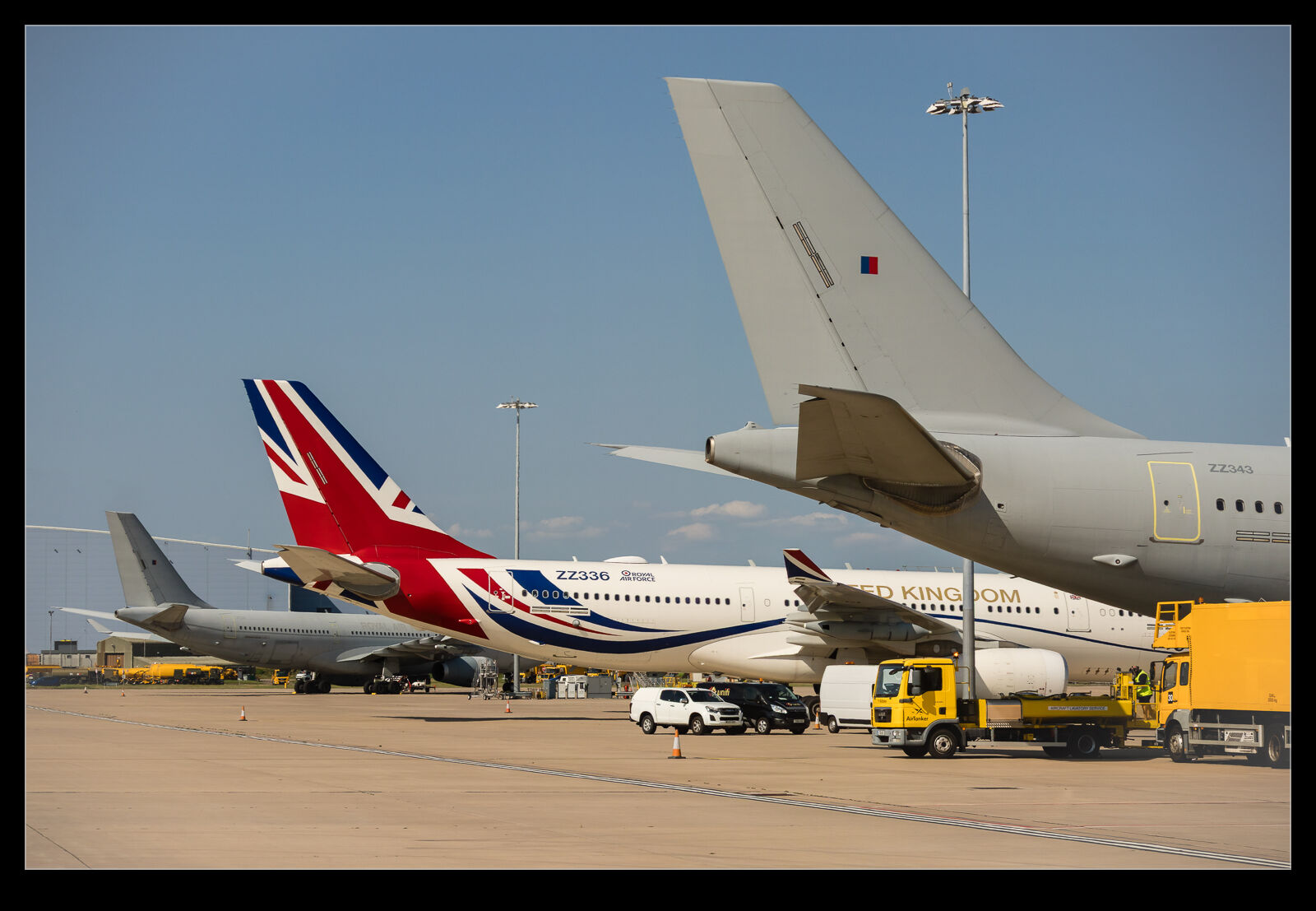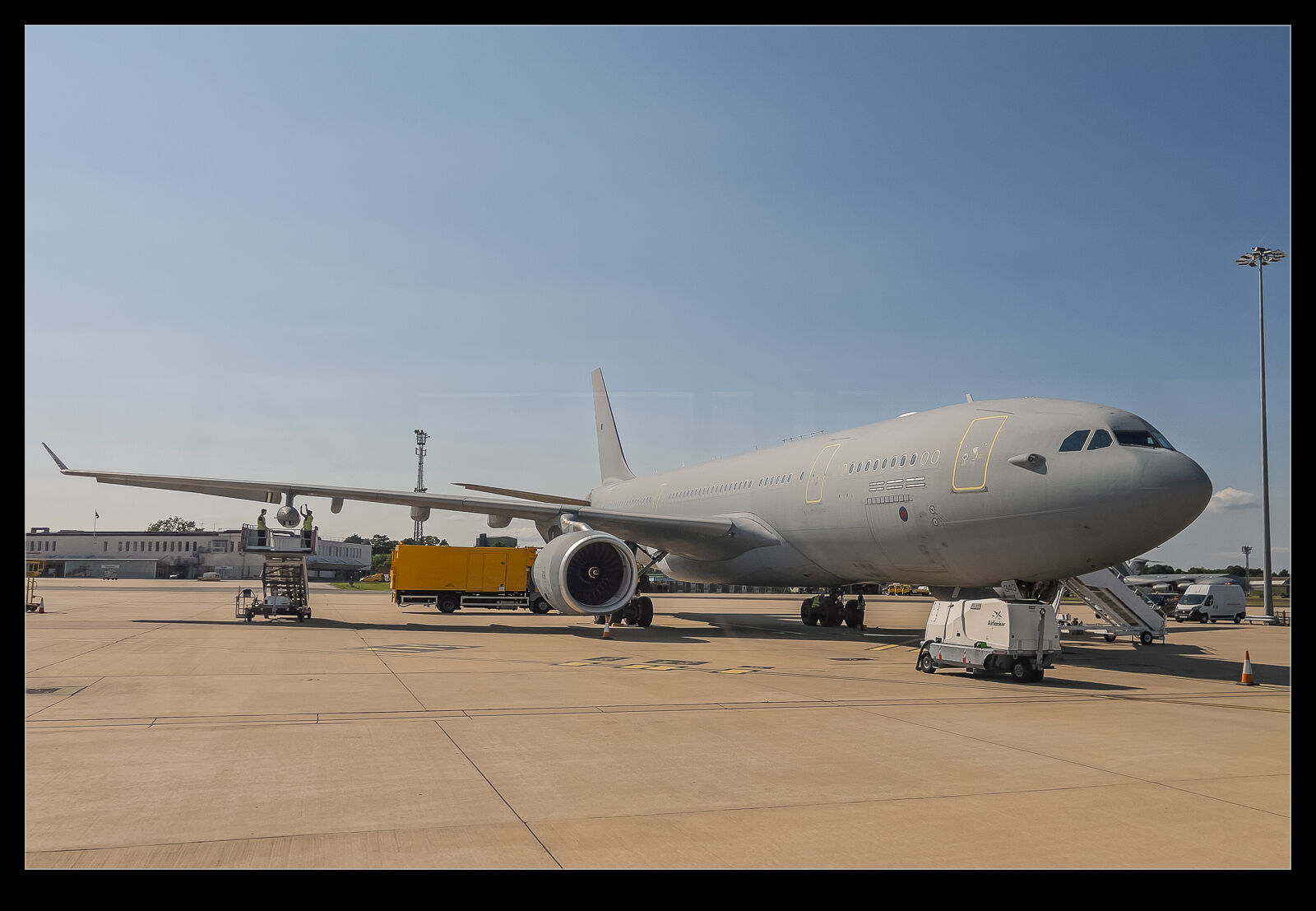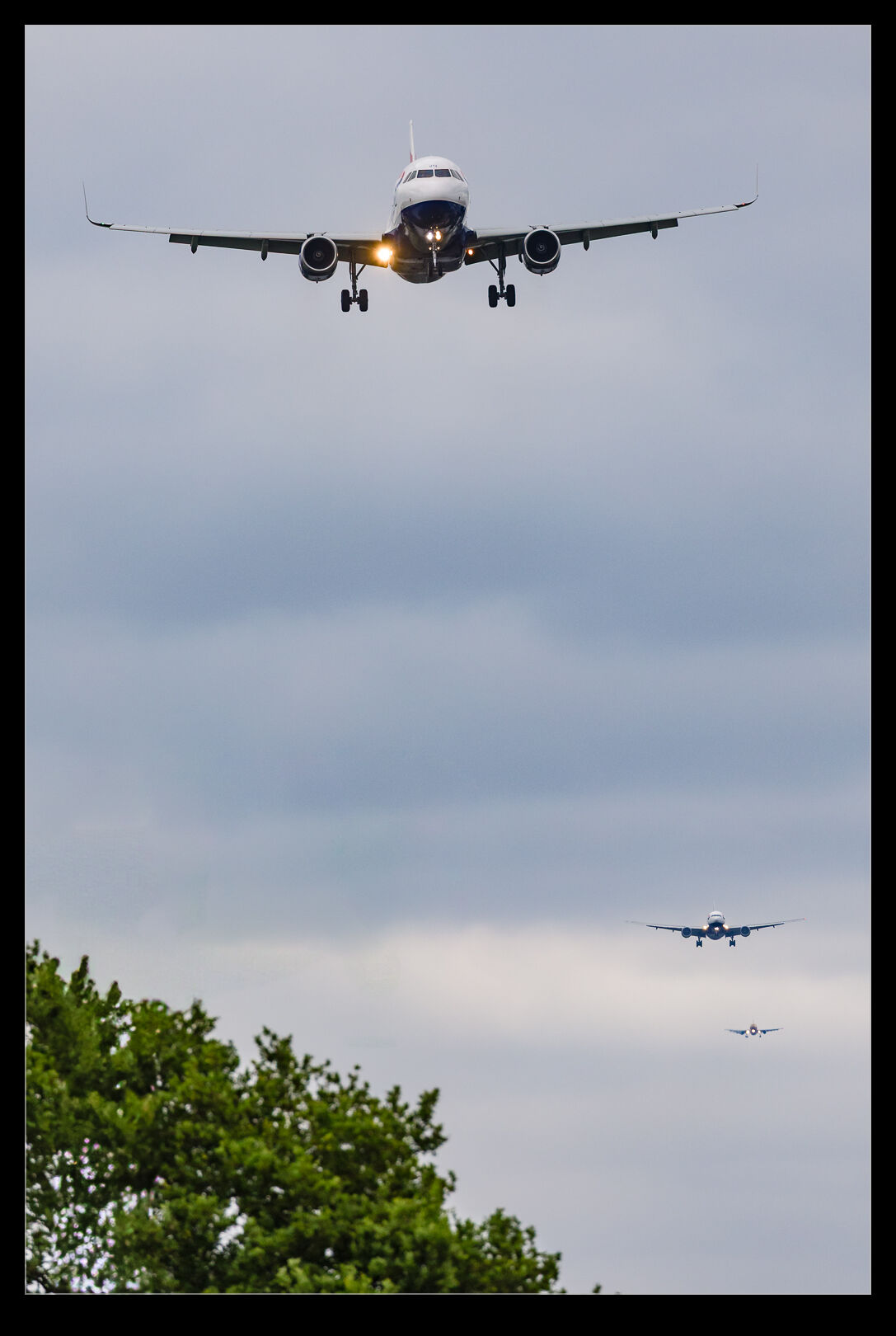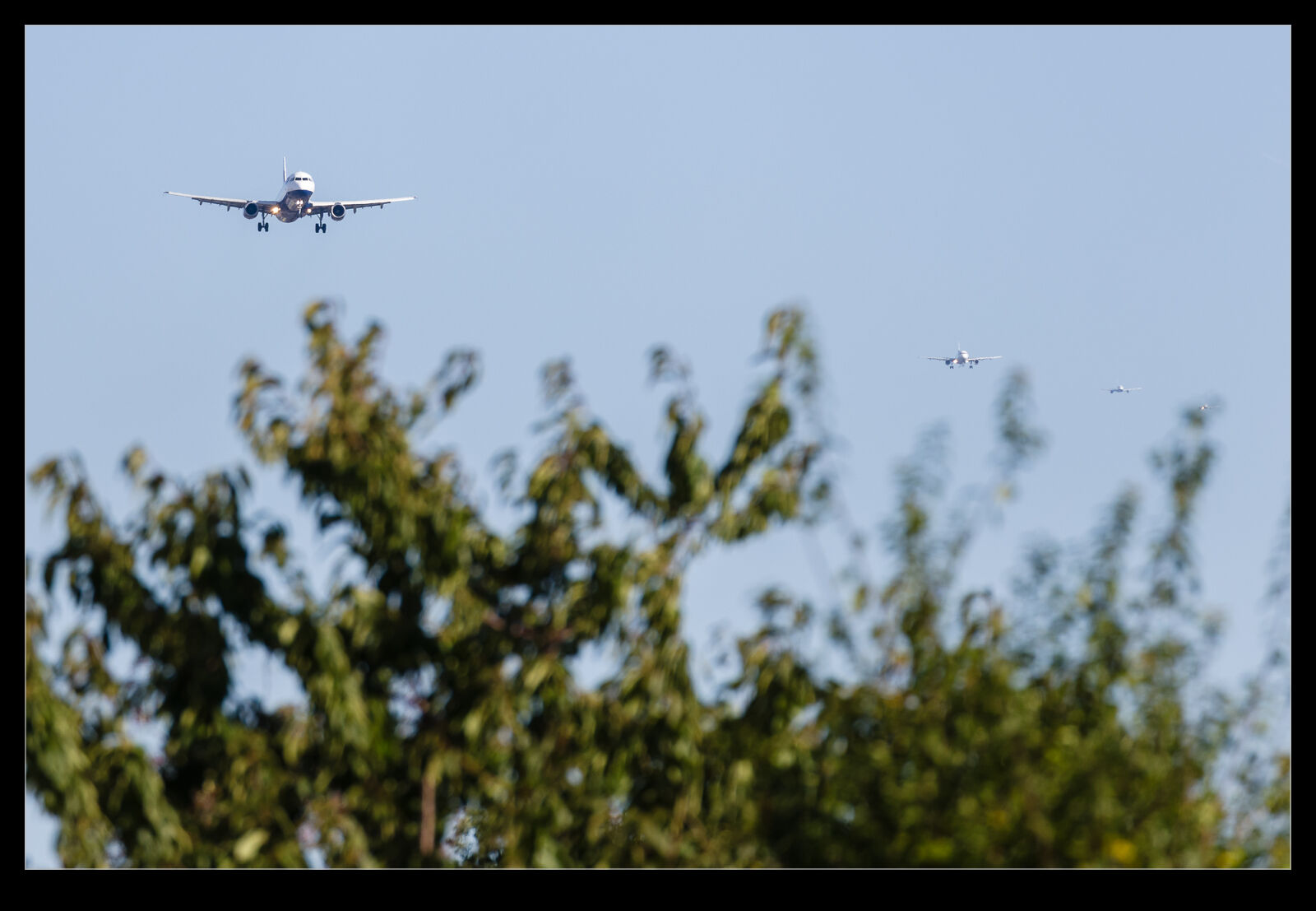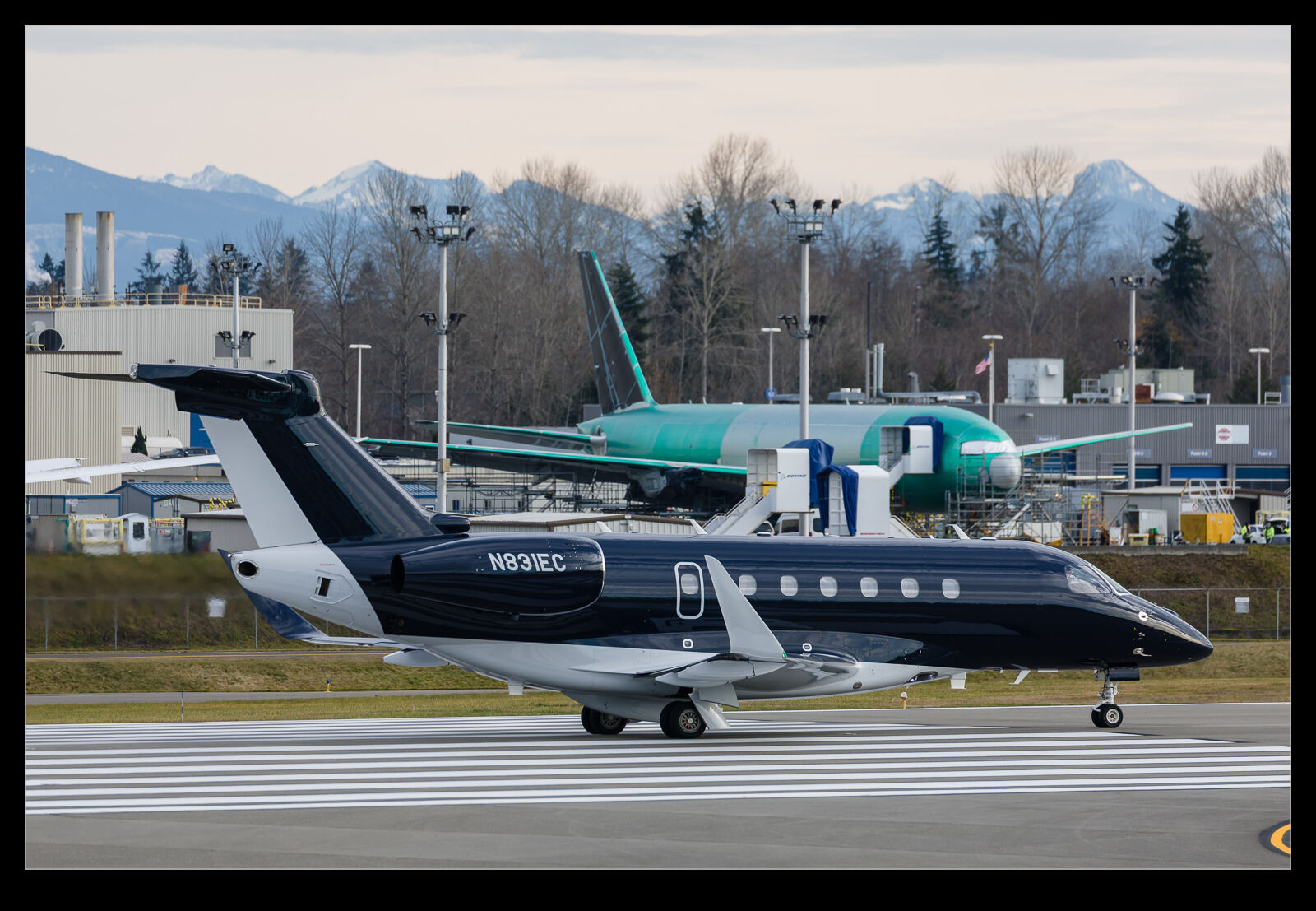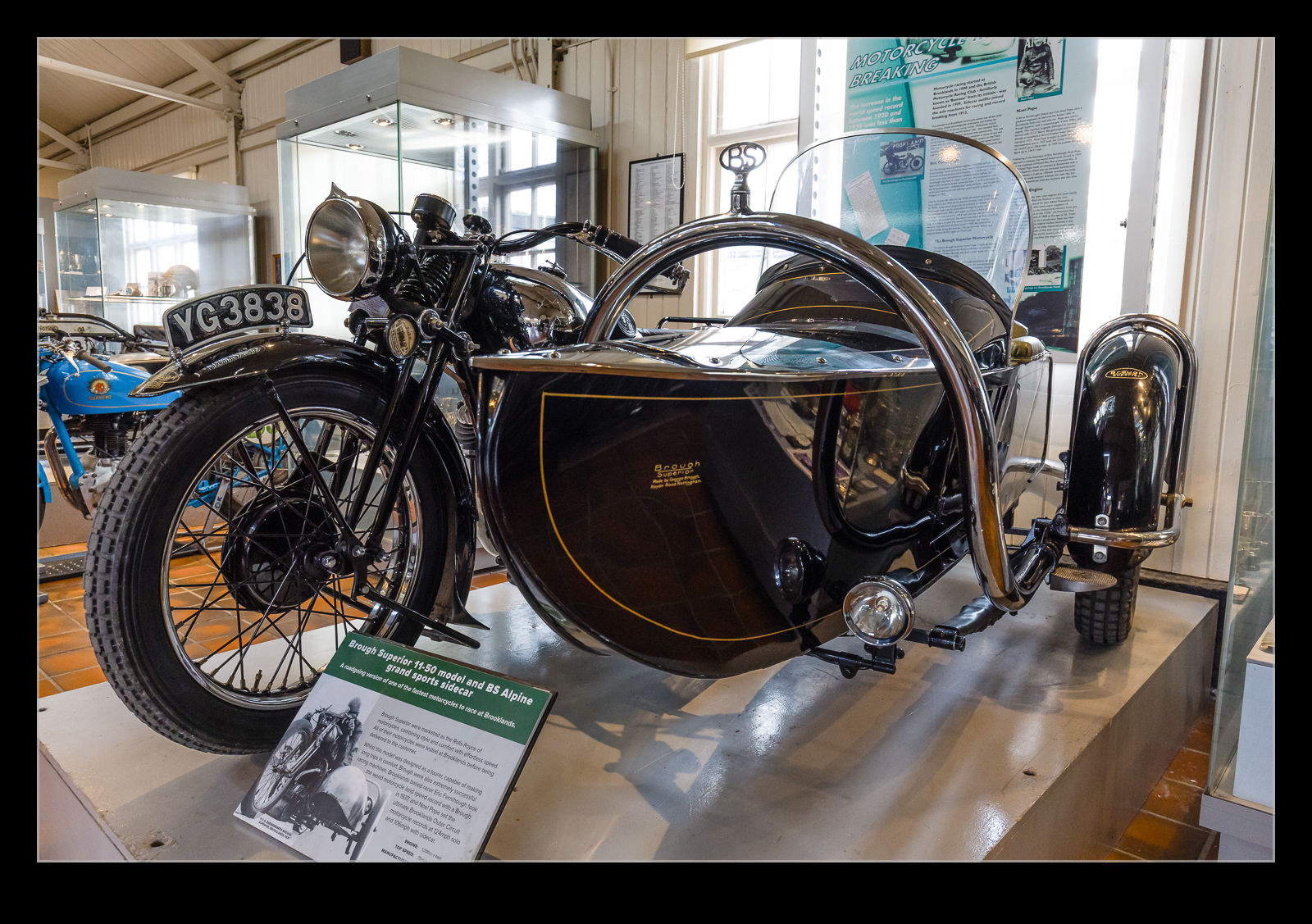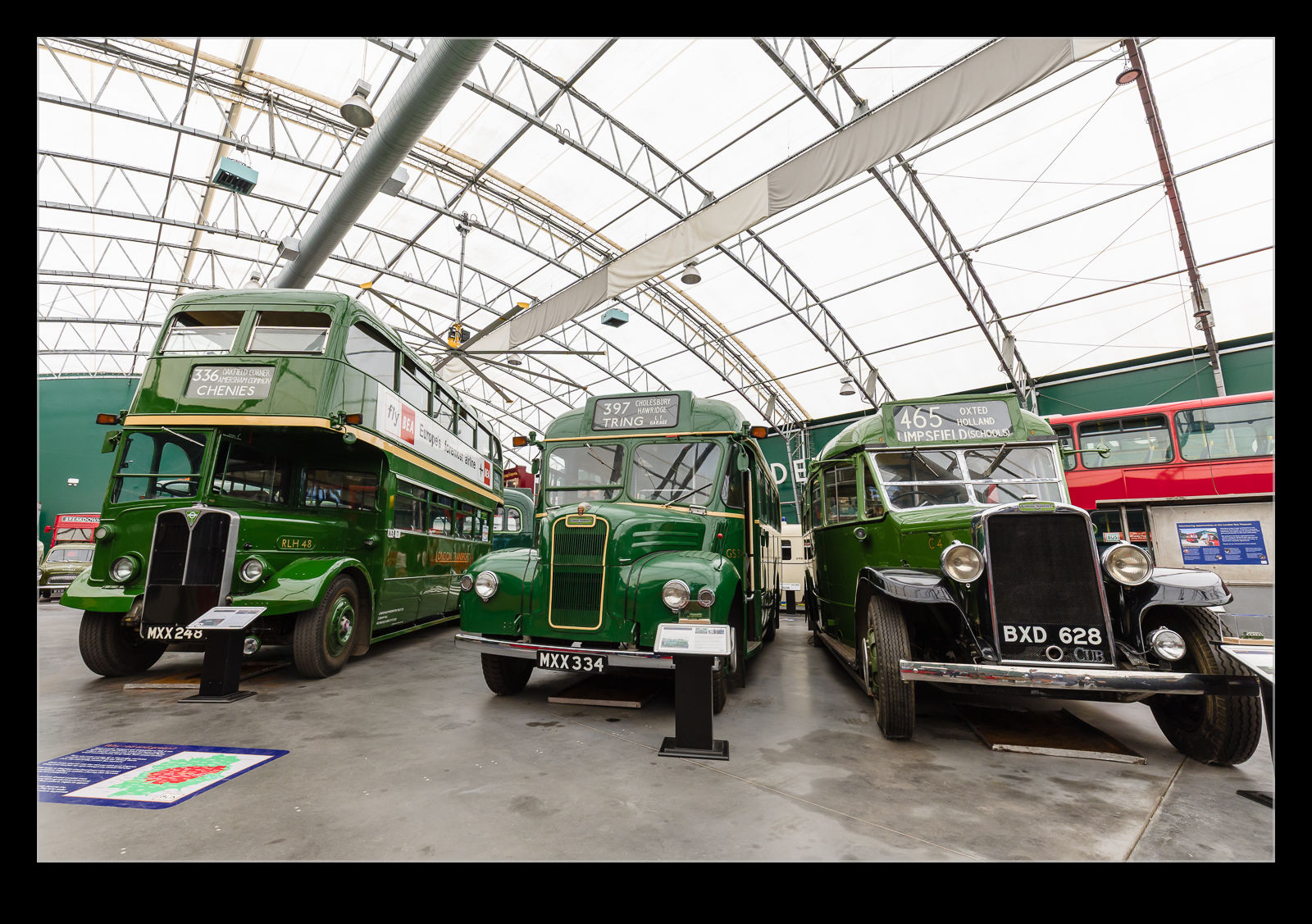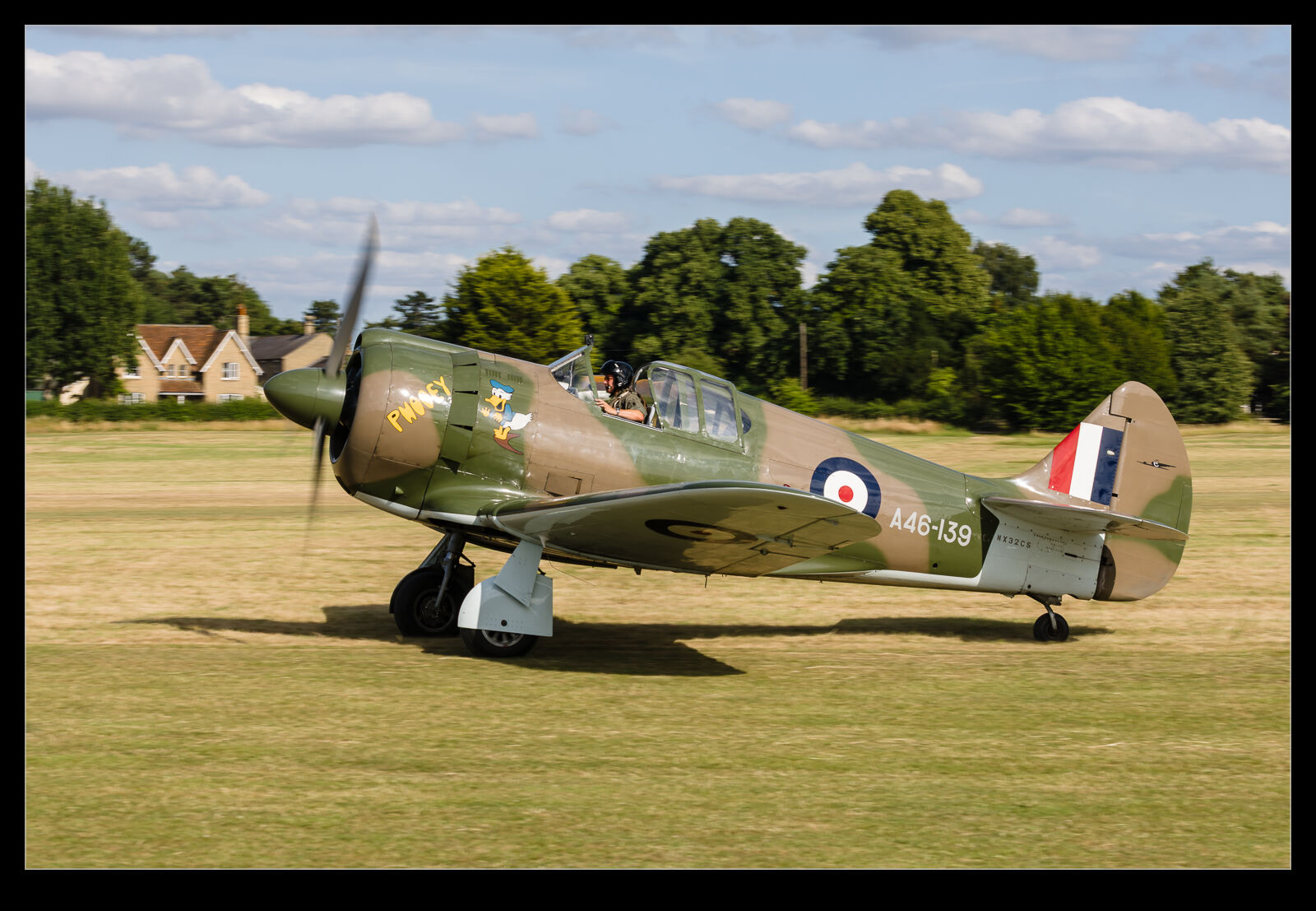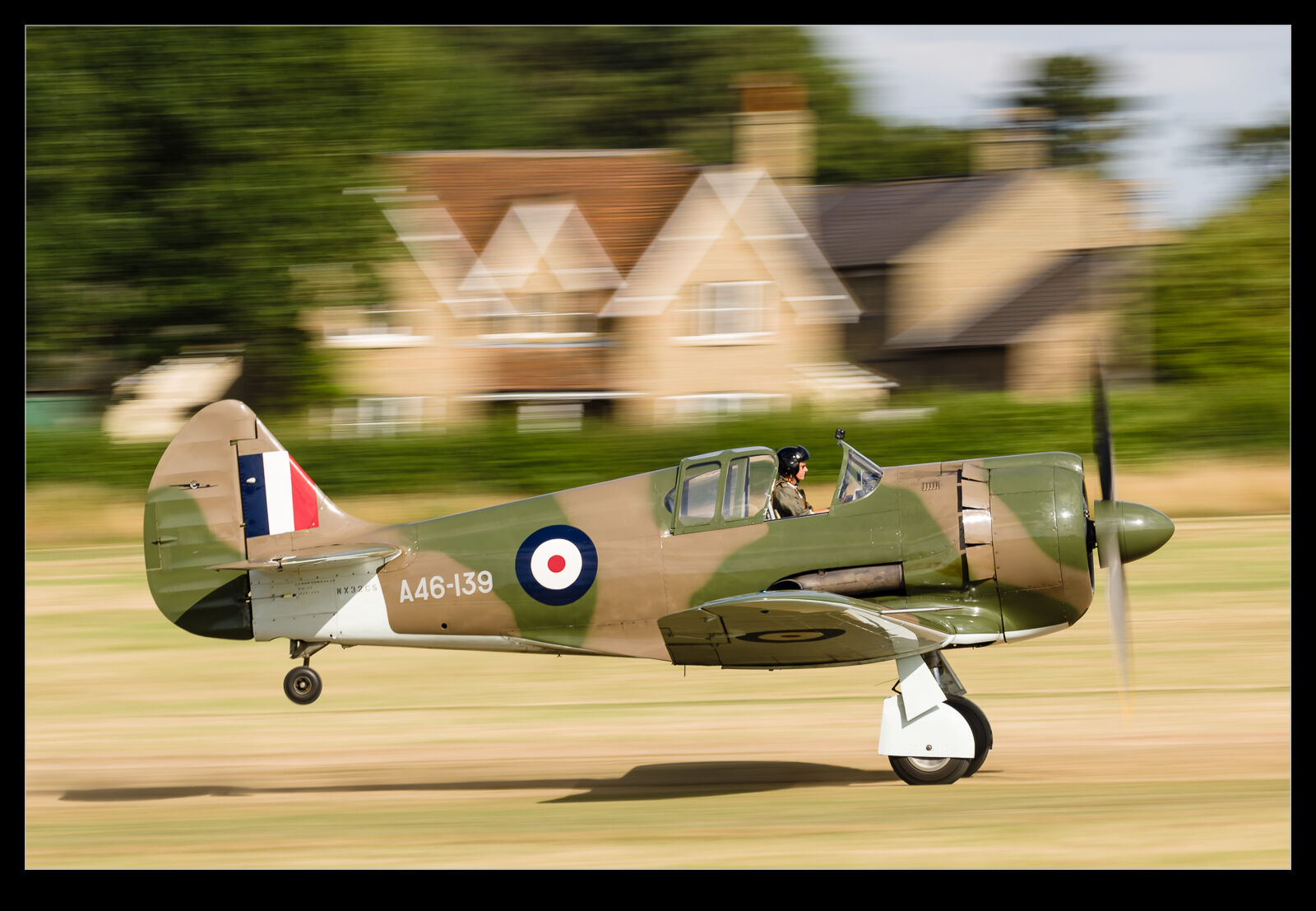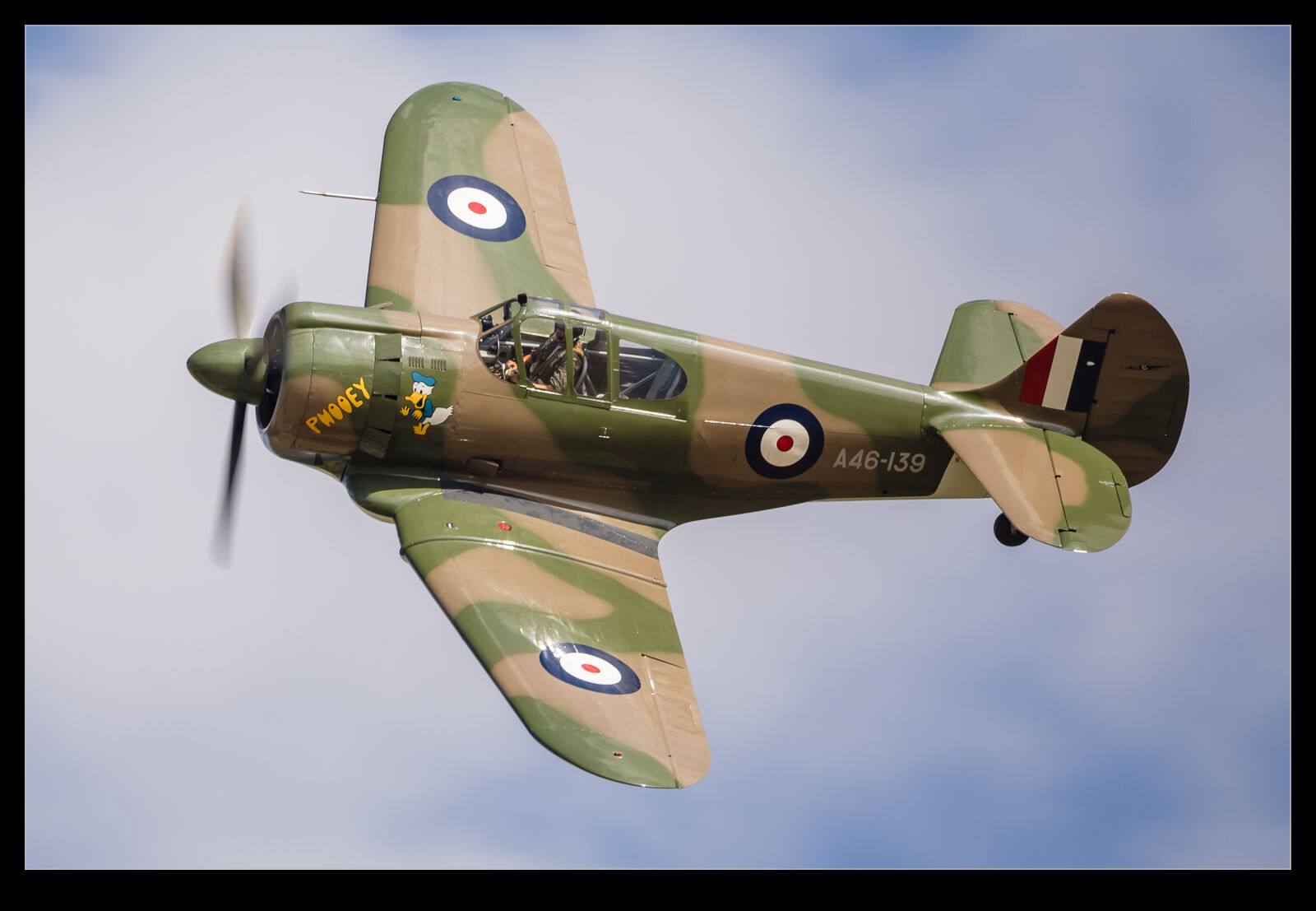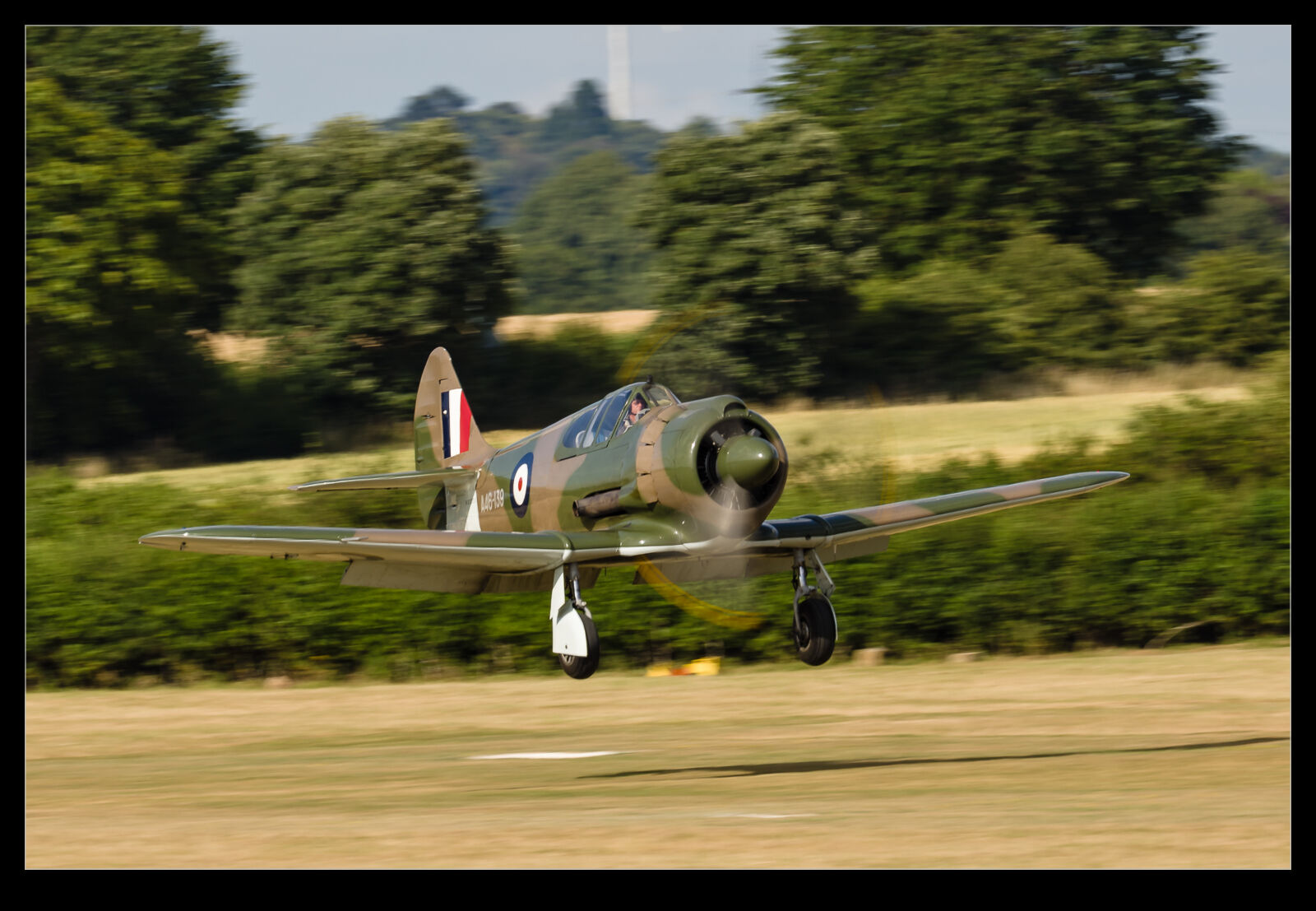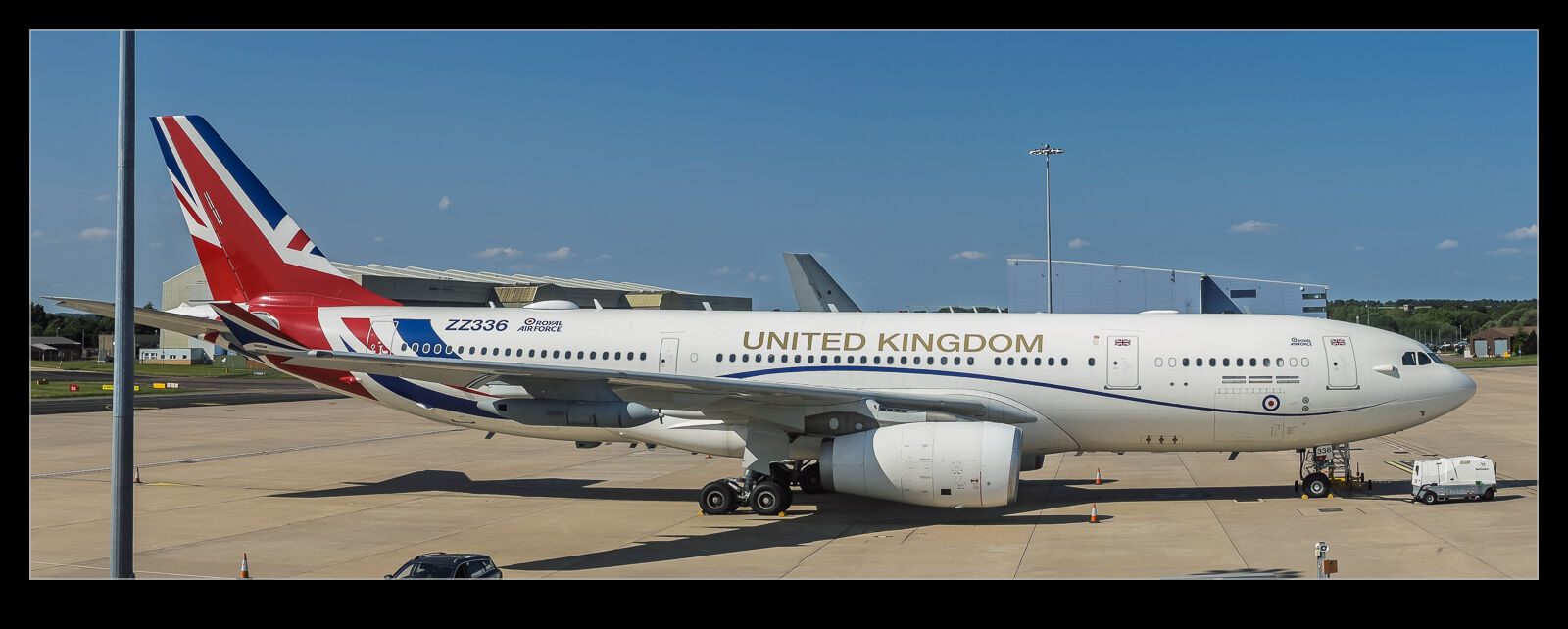 My Voyager ride with 101 Sqn ended back at Brize Norton and we pulled into the line with some other Voyagers. This included Vespina, the jet that is painted in national markings rather than the usual grey. We hung out on the ramp to get a group photo before heading back to the terminal. I got some shots of the Voyagers on the line while I was there (including the jet that we had just been in).
My Voyager ride with 101 Sqn ended back at Brize Norton and we pulled into the line with some other Voyagers. This included Vespina, the jet that is painted in national markings rather than the usual grey. We hung out on the ramp to get a group photo before heading back to the terminal. I got some shots of the Voyagers on the line while I was there (including the jet that we had just been in).
Tag Archives: aircraft
Sensors Versus Markings on the Gripen E
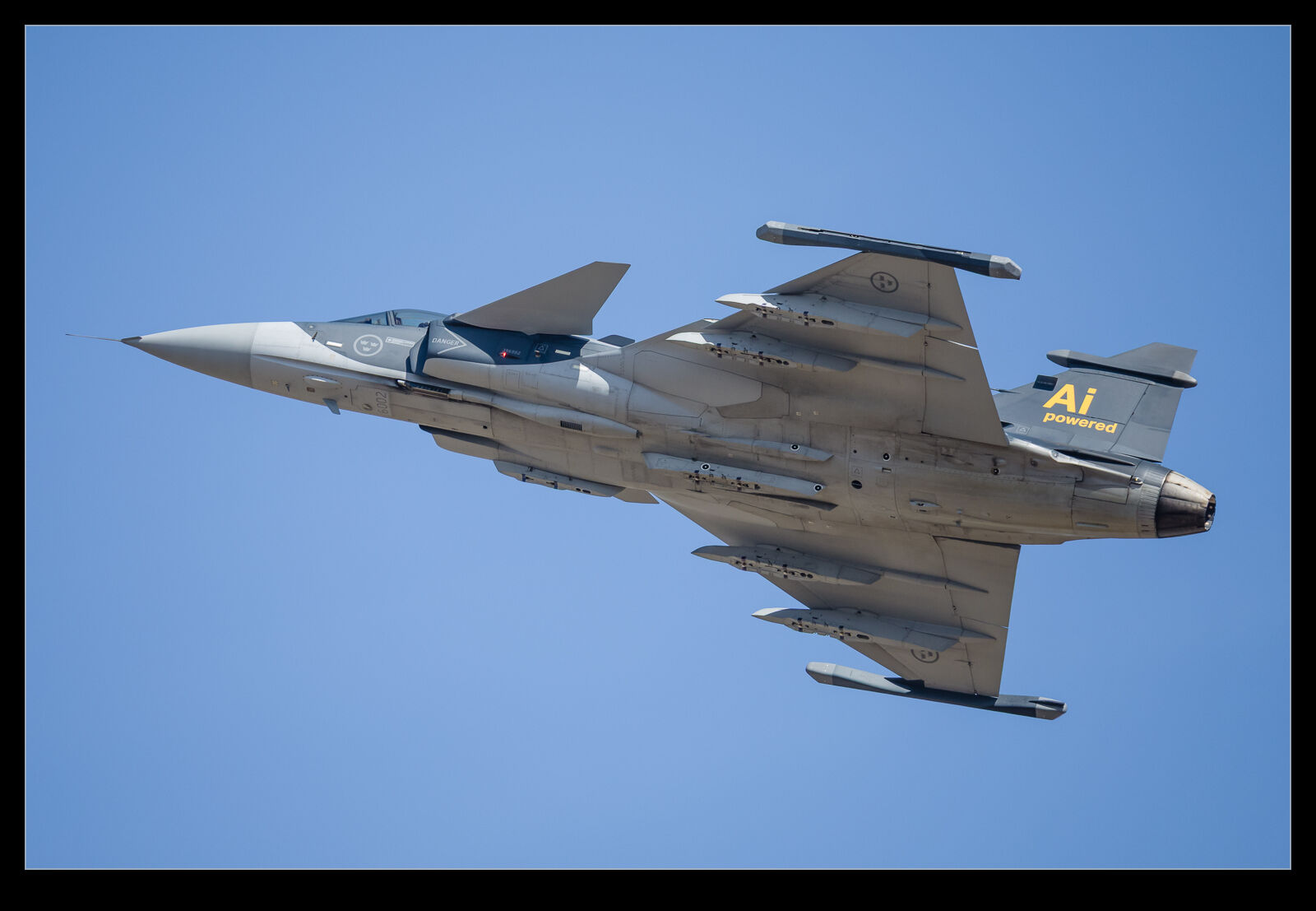 I was editing my images from RIAT recently and culling those that were never going to see the light of day. As I was working through the images of the Gripen E demonstrations, I noticed an array of sensors on the fuselage of the aircraft. There were also a bunch of markings that looked quite similar. The sensors seemed to have a specific shaping to the fuselage to align them with where they needed to face whilst the markings just seemed painted on to both the fuselage and the pylons. My assumption was that these were tracking locations for stores separation tests, but they were different to what I have seen used for this previously. I can’t tell for sure whether one is designed to distract you from the other! I have no knowledge of the systems fitted to the Gripen and will have to do some research but once you see this array of sensors, you can’t help but notice them thereafter!
I was editing my images from RIAT recently and culling those that were never going to see the light of day. As I was working through the images of the Gripen E demonstrations, I noticed an array of sensors on the fuselage of the aircraft. There were also a bunch of markings that looked quite similar. The sensors seemed to have a specific shaping to the fuselage to align them with where they needed to face whilst the markings just seemed painted on to both the fuselage and the pylons. My assumption was that these were tracking locations for stores separation tests, but they were different to what I have seen used for this previously. I can’t tell for sure whether one is designed to distract you from the other! I have no knowledge of the systems fitted to the Gripen and will have to do some research but once you see this array of sensors, you can’t help but notice them thereafter!
The Approach Is Busy
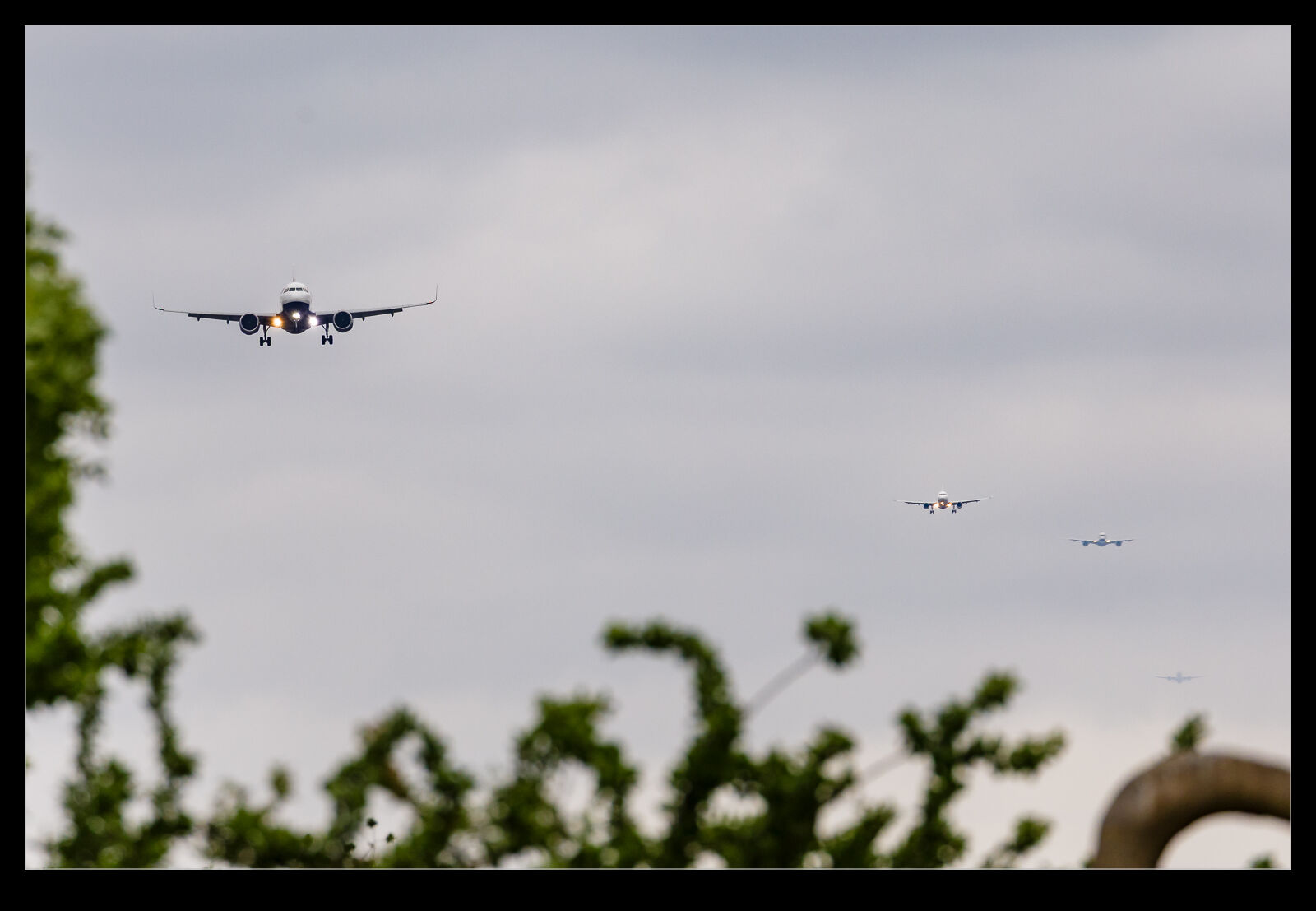 Back to a time earlier this year when I made a trip to Heathrow for a brief bit of shooting. Most of the time, I was offset from the approach path to get shots of the jet as they were on short final approach. However, I did walk along to the approach lights to get some head on shots. While there were more about getting a tight angle on the jets and some underside shots, it did also allow me to look back up the approach and see a number of jets on the glideslope or turning to line up. Heathrow is a busy place so there always seem to be jets on approach.
Back to a time earlier this year when I made a trip to Heathrow for a brief bit of shooting. Most of the time, I was offset from the approach path to get shots of the jet as they were on short final approach. However, I did walk along to the approach lights to get some head on shots. While there were more about getting a tight angle on the jets and some underside shots, it did also allow me to look back up the approach and see a number of jets on the glideslope or turning to line up. Heathrow is a busy place so there always seem to be jets on approach.
Black Jets Look Better
Brooklands Museum
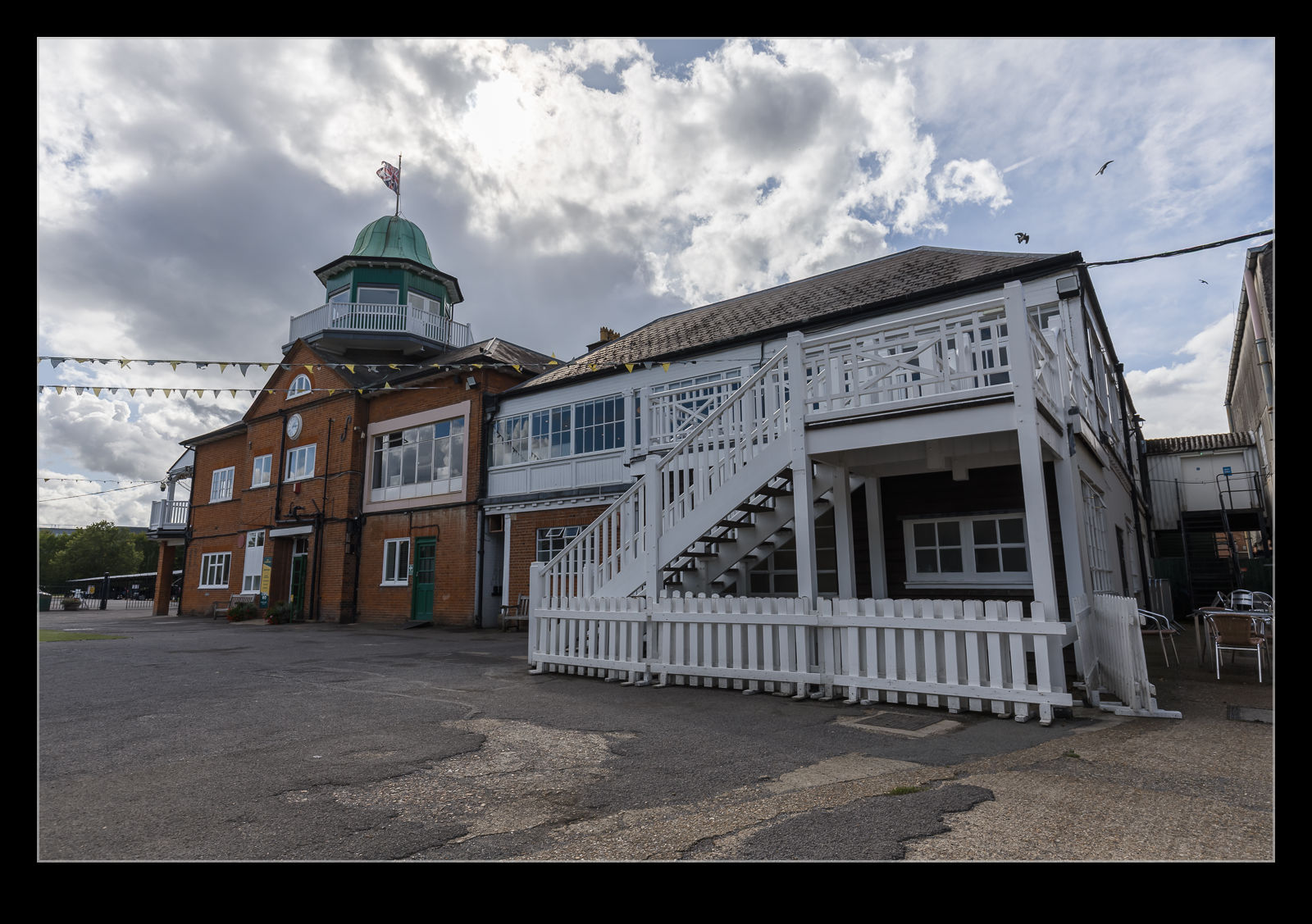 One slightly overcast Saturday, I dragged Nancy along to a museum that I was keen to see. The Brooklands Museum is one I had been to a couple of times before we left the UK. I first went there in 1990 when it wasn’t actually open to the public. I was doing some research for an exhibit that were were putting together in the Department of Aeronautics on Barnes Wallis’s Swallow project. The archives at Brooklands had a lot of material that we could access. The next time I went, it was when I worked in London and we had a team meeting at the museum which then included the chance to have a look around.
One slightly overcast Saturday, I dragged Nancy along to a museum that I was keen to see. The Brooklands Museum is one I had been to a couple of times before we left the UK. I first went there in 1990 when it wasn’t actually open to the public. I was doing some research for an exhibit that were were putting together in the Department of Aeronautics on Barnes Wallis’s Swallow project. The archives at Brooklands had a lot of material that we could access. The next time I went, it was when I worked in London and we had a team meeting at the museum which then included the chance to have a look around.
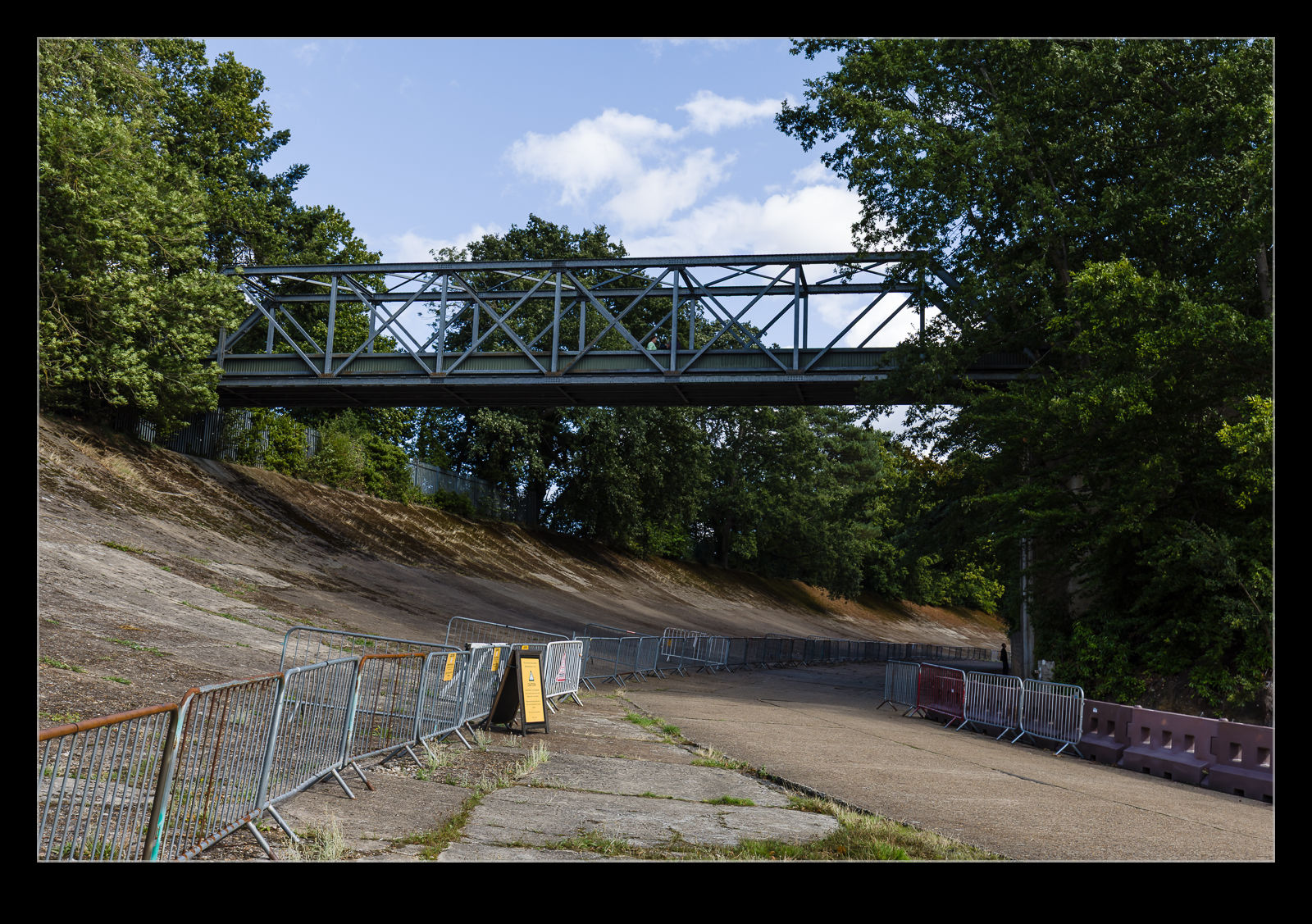 A lot has changed since that time, and I wanted to see what it is currently like. The museum sits on the site of what started out as the Brooklands motor racing circuit and then became the Vickers Weybridge factory. The museum reflects this extensive history. The racing circuit had banked curves and, while much of the circuit is now built over, there is still some of the original banking in place behind where the museum is located. The banking does not look that steep either in pictures or even when looking at it from a distance. However, when I was there on the previous work trip, we were allowed out on the banking, and my work shoes couldn’t maintain any traction on the concrete. I just slipped back down when trying to walk up the slope. On this visit, they strongly discouraged any walking on the banking.
A lot has changed since that time, and I wanted to see what it is currently like. The museum sits on the site of what started out as the Brooklands motor racing circuit and then became the Vickers Weybridge factory. The museum reflects this extensive history. The racing circuit had banked curves and, while much of the circuit is now built over, there is still some of the original banking in place behind where the museum is located. The banking does not look that steep either in pictures or even when looking at it from a distance. However, when I was there on the previous work trip, we were allowed out on the banking, and my work shoes couldn’t maintain any traction on the concrete. I just slipped back down when trying to walk up the slope. On this visit, they strongly discouraged any walking on the banking.
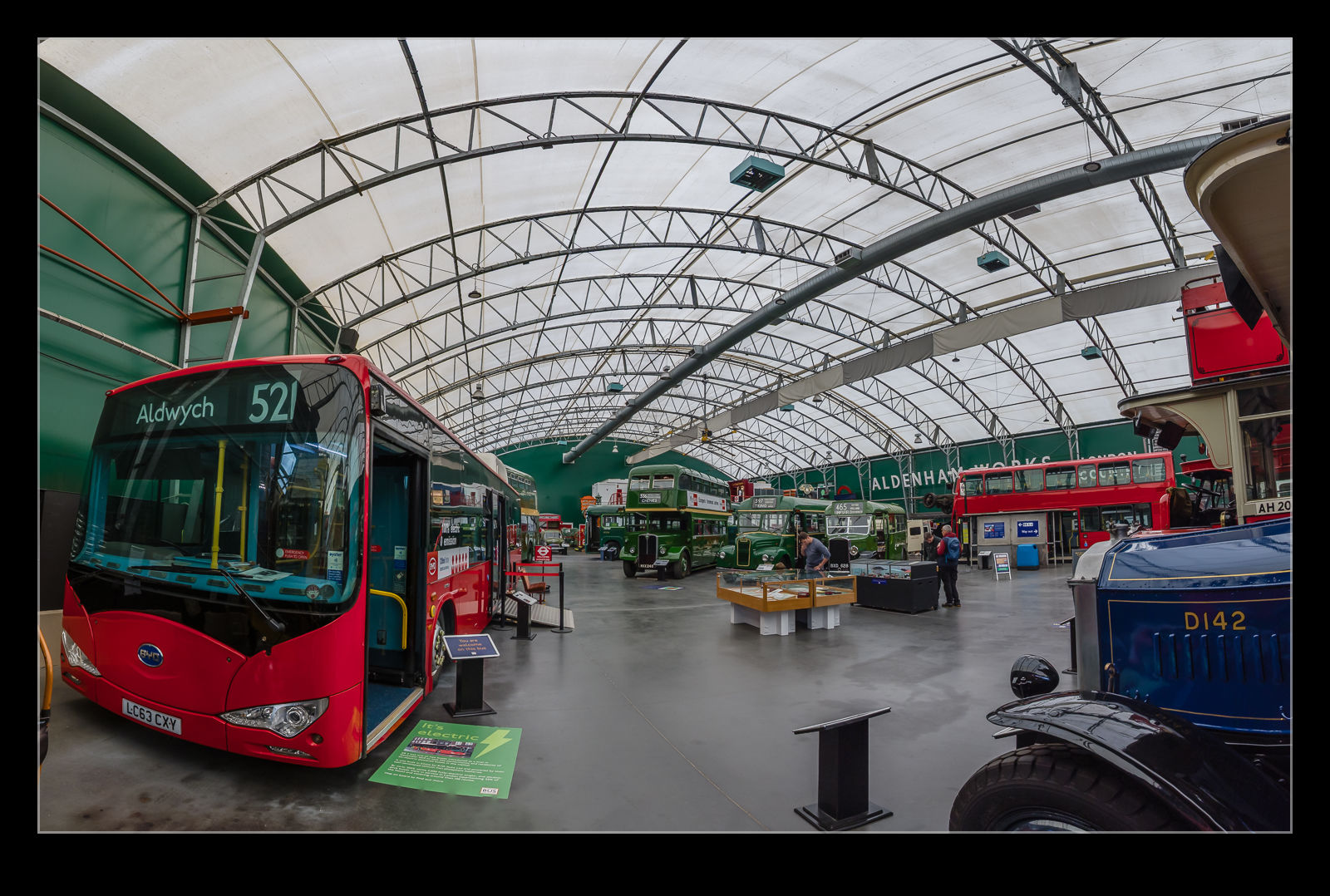 The museum has three core elements. The first is the racing history of Brooklands. The infield infrastructure is nicely maintained with old garages for the tenants along with the clubhouse and associated buildings. There are car exhibits as well as bicycle and motorbikes. Apparently, road racing of bicycles was illegal in the UK for many years so races on the track were the only option. Motorbike racing was an obvious option if you were a car racing circuit, so the collection of old motorbikes made sense.
The museum has three core elements. The first is the racing history of Brooklands. The infield infrastructure is nicely maintained with old garages for the tenants along with the clubhouse and associated buildings. There are car exhibits as well as bicycle and motorbikes. Apparently, road racing of bicycles was illegal in the UK for many years so races on the track were the only option. Motorbike racing was an obvious option if you were a car racing circuit, so the collection of old motorbikes made sense.
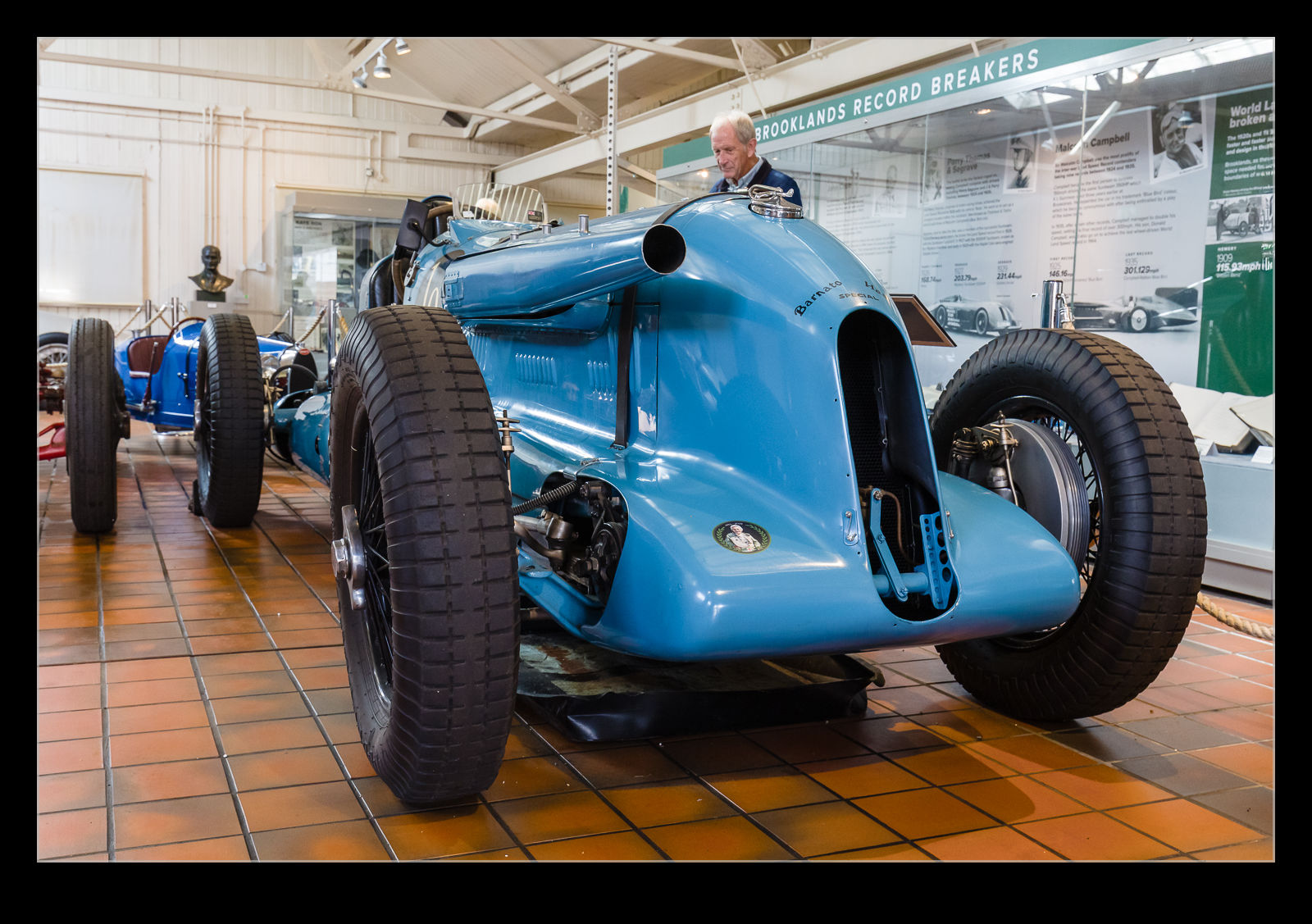 The second element is the aerospace history. The factory was heavily involved in manufacturing aircraft in the Second World War with the Wellington being possibly the most famous product. The site then moved into airliner production post war with the Viscount, Vanguard and VC-10 being well represented. Weybridge was also central to the development of Concorde and one of the pre-production jets is also on show. There are also Hawker jets on display, and I have covered them separately in other posts. There are also some test facilities that are rather unusual including the stratospheric chamber which will get its own coverage in due course.
The second element is the aerospace history. The factory was heavily involved in manufacturing aircraft in the Second World War with the Wellington being possibly the most famous product. The site then moved into airliner production post war with the Viscount, Vanguard and VC-10 being well represented. Weybridge was also central to the development of Concorde and one of the pre-production jets is also on show. There are also Hawker jets on display, and I have covered them separately in other posts. There are also some test facilities that are rather unusual including the stratospheric chamber which will get its own coverage in due course.
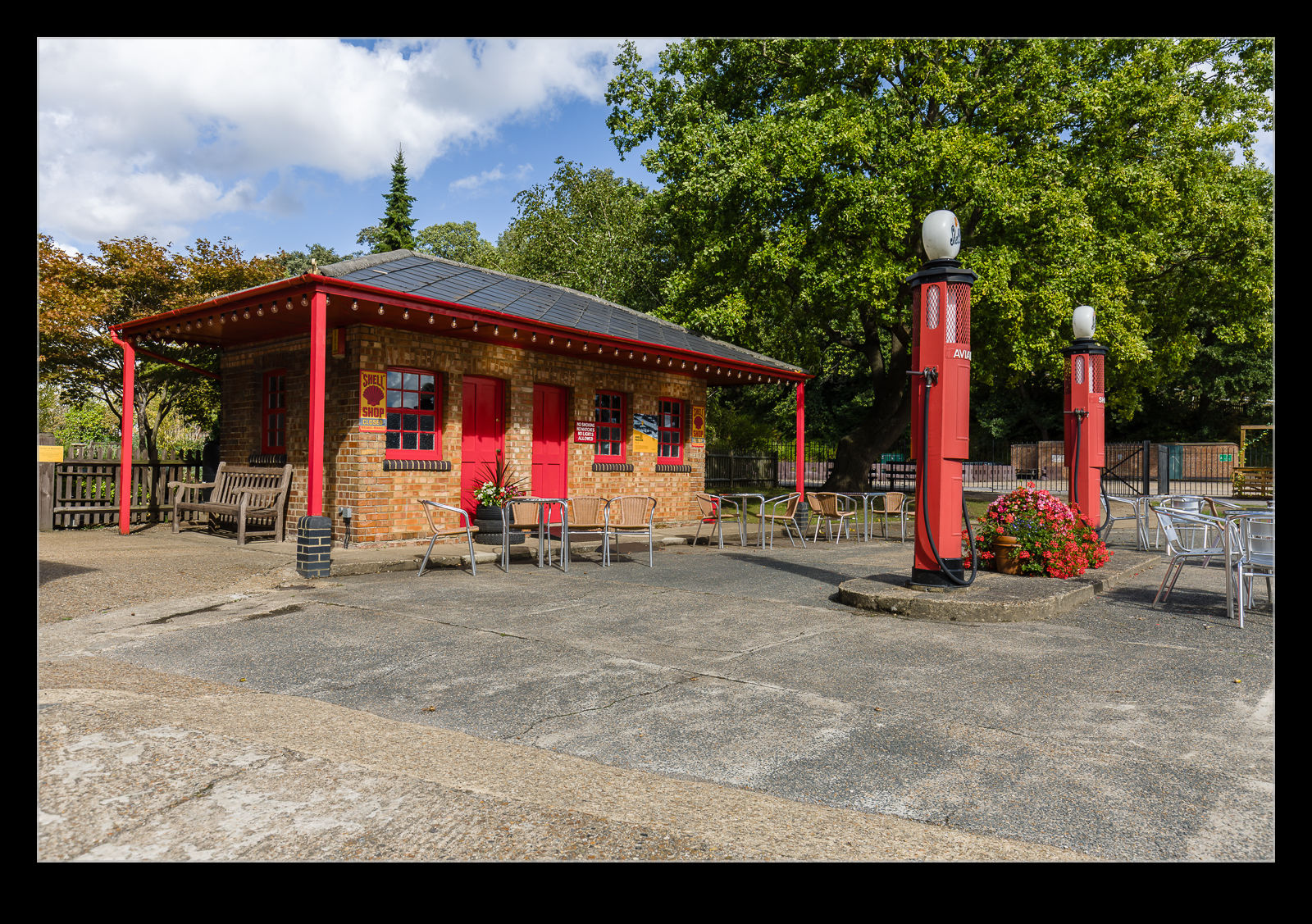 The third part of the museum is a collection of buses belonging to the London Bus Museum. This is included in the admission, and I was not even aware of it before we got there. Aside from plenty of buses, there are lots of exhibits about the supporting elements of bus operation from years gone by. It was a pretty interesting collection, and I was surprised how much time I ended up spending in there.
The third part of the museum is a collection of buses belonging to the London Bus Museum. This is included in the admission, and I was not even aware of it before we got there. Aside from plenty of buses, there are lots of exhibits about the supporting elements of bus operation from years gone by. It was a pretty interesting collection, and I was surprised how much time I ended up spending in there.
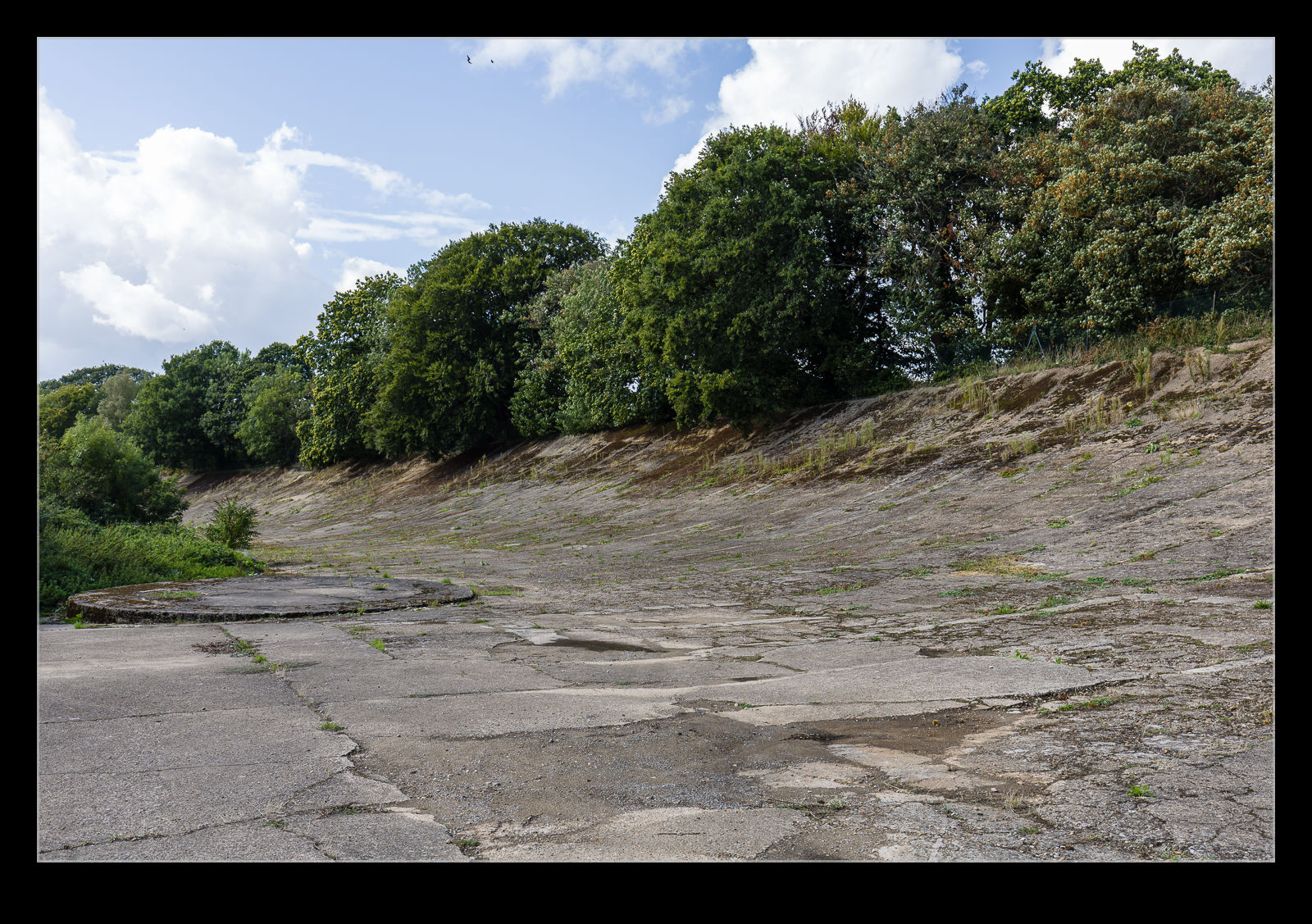 The museum proved to be a really interesting day out and I think Nancy, while maybe not quite as enthusiastic as me, also found it reasonably worthwhile. The collection has expanded significantly since I was last there and it is able to provide a full day out if you want to check it out. Here is a selection of images from the day. It won’t surprise some that know me to find out that there are way more images from the day than I have included here!
The museum proved to be a really interesting day out and I think Nancy, while maybe not quite as enthusiastic as me, also found it reasonably worthwhile. The collection has expanded significantly since I was last there and it is able to provide a full day out if you want to check it out. Here is a selection of images from the day. It won’t surprise some that know me to find out that there are way more images from the day than I have included here!
Have I Ever Seen a Boomerang?
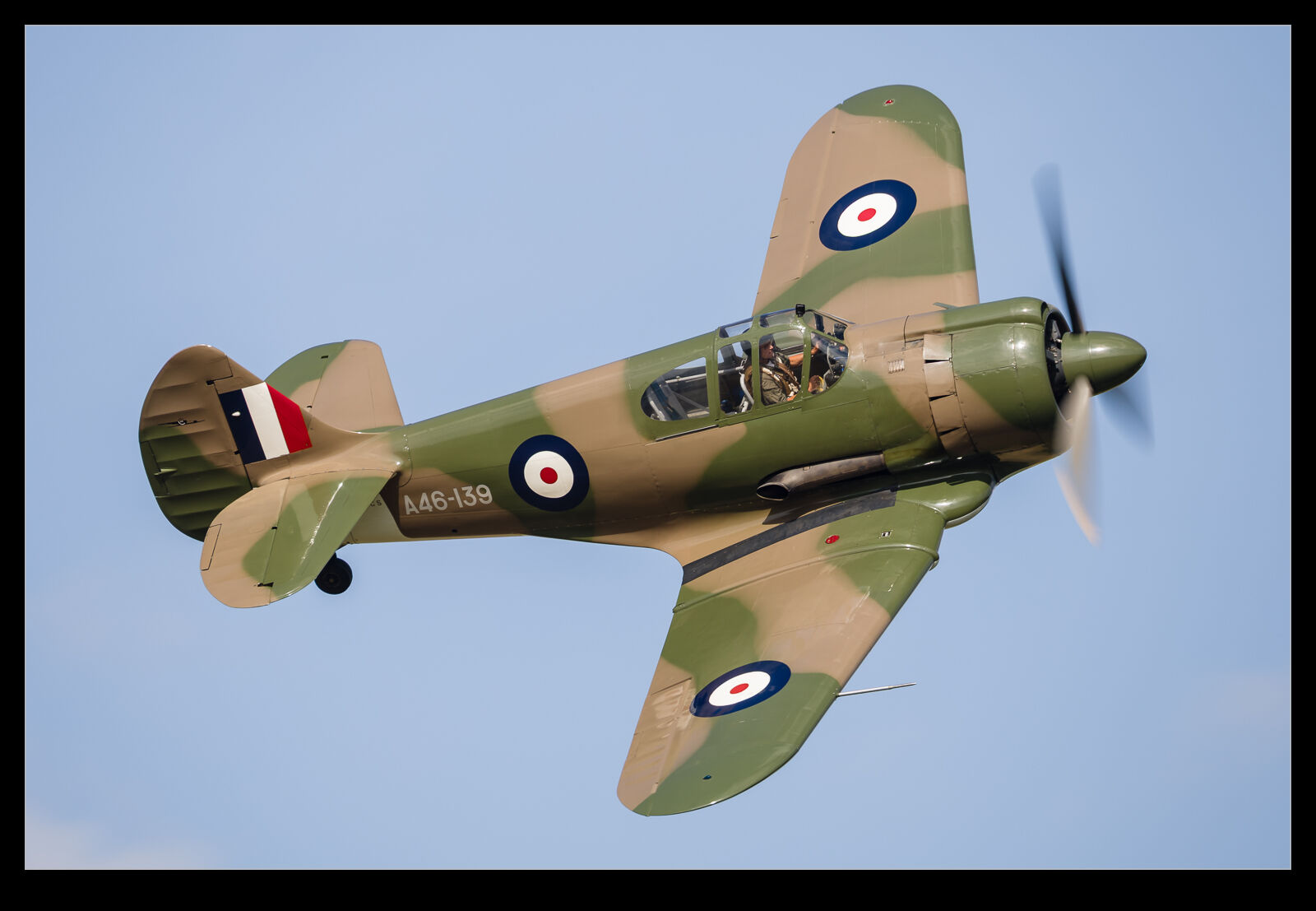 Before you think I am being ridiculous, I am not referring to the profiled wood that will come back to you but the plane. In fact, there is more than one plane called the Boomerang. A Rutan design called the Boomerang was a one off which I once saw on the ground at Oshkosh. However, it was also the name of a piston fighter built in Australia. I had never seen one of those before. If I am being totally honest, I still haven’t since the one I saw was a replica built but it is a pretty impressive replica so we shall let that go.
Before you think I am being ridiculous, I am not referring to the profiled wood that will come back to you but the plane. In fact, there is more than one plane called the Boomerang. A Rutan design called the Boomerang was a one off which I once saw on the ground at Oshkosh. However, it was also the name of a piston fighter built in Australia. I had never seen one of those before. If I am being totally honest, I still haven’t since the one I saw was a replica built but it is a pretty impressive replica so we shall let that go.
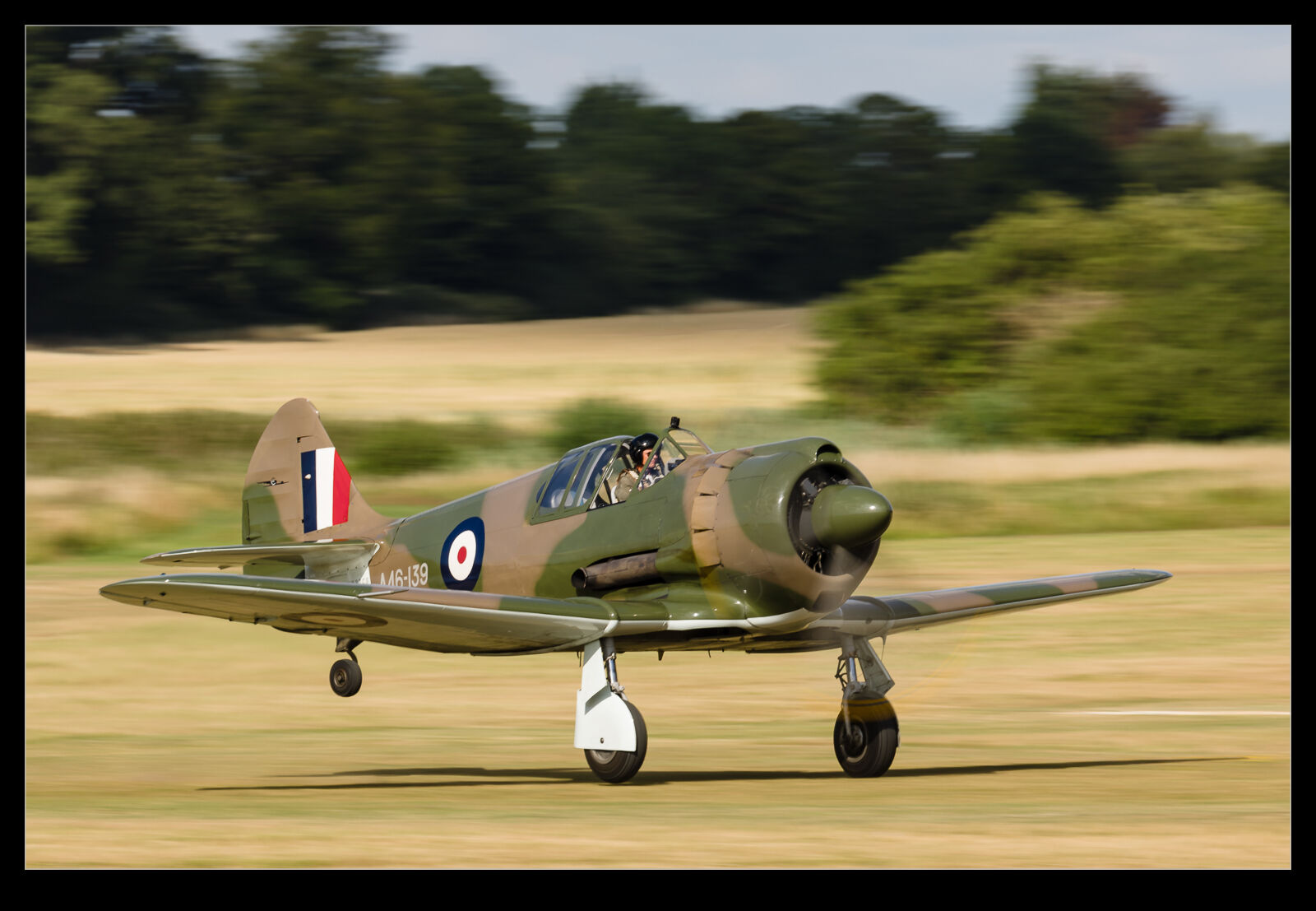 It was brought to the Festival of Flight that was held by the Shuttleworth Trust at Old Warden in the summer. Having an old type with an unfamiliar shape when you can get blasé about the various Spitfires, Hurricanes, Mustangs etc. is a nice change. It had a great paint job, and the tighter confines of Old Warden allowed it to be displayed nice and close to the crowd line. Certainly, one of the more notable things I got to shoot this year.
It was brought to the Festival of Flight that was held by the Shuttleworth Trust at Old Warden in the summer. Having an old type with an unfamiliar shape when you can get blasé about the various Spitfires, Hurricanes, Mustangs etc. is a nice change. It had a great paint job, and the tighter confines of Old Warden allowed it to be displayed nice and close to the crowd line. Certainly, one of the more notable things I got to shoot this year.
Portugal’s Merlins Just Look Better
 The AW101 is a great looking helicopter. I saw the original prototypes fly in the late ‘80s and early ‘90s including one that was configured as a civilian passenger type (sadly never to have the demand to make it to production). Since that time, I have liked to get photos of them wherever possible. The Canadian Cormorants look great in their yellow paint, and I finally got shots of them last year. Normally they are not painted in a very exciting way.
The AW101 is a great looking helicopter. I saw the original prototypes fly in the late ‘80s and early ‘90s including one that was configured as a civilian passenger type (sadly never to have the demand to make it to production). Since that time, I have liked to get photos of them wherever possible. The Canadian Cormorants look great in their yellow paint, and I finally got shots of them last year. Normally they are not painted in a very exciting way.
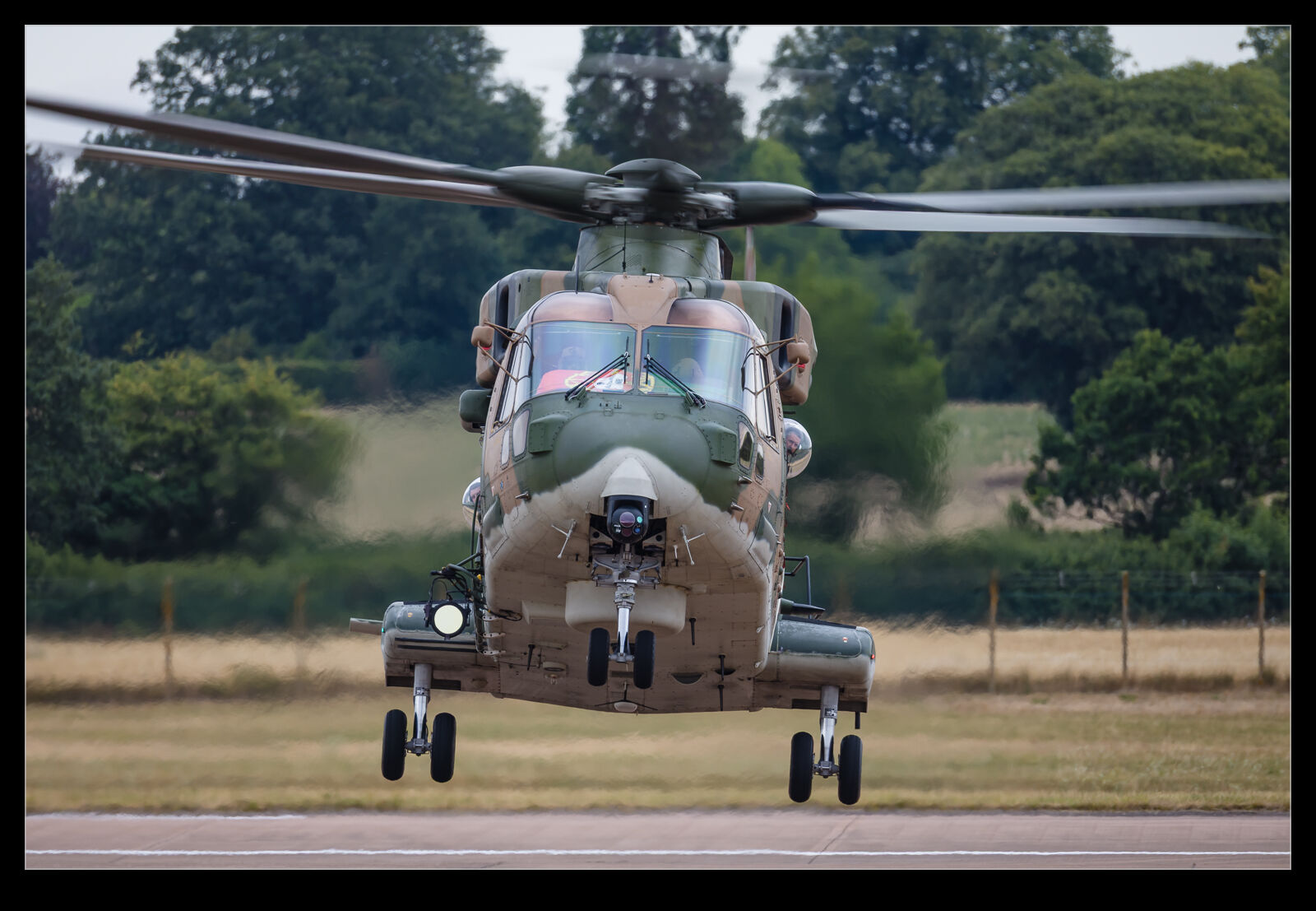 However, the Portuguese Merlin came to display at RIAT this year and it was way better looking than the average. It has a camouflage finish which seems to be a rarity these days. The colours of the camo were also quite vibrant, and it made for a striking subject. It certainly helped that the crew were throwing it around quite energetically and performed on more than one occasion, so I got plenty of shots of it.
However, the Portuguese Merlin came to display at RIAT this year and it was way better looking than the average. It has a camouflage finish which seems to be a rarity these days. The colours of the camo were also quite vibrant, and it made for a striking subject. It certainly helped that the crew were throwing it around quite energetically and performed on more than one occasion, so I got plenty of shots of it.
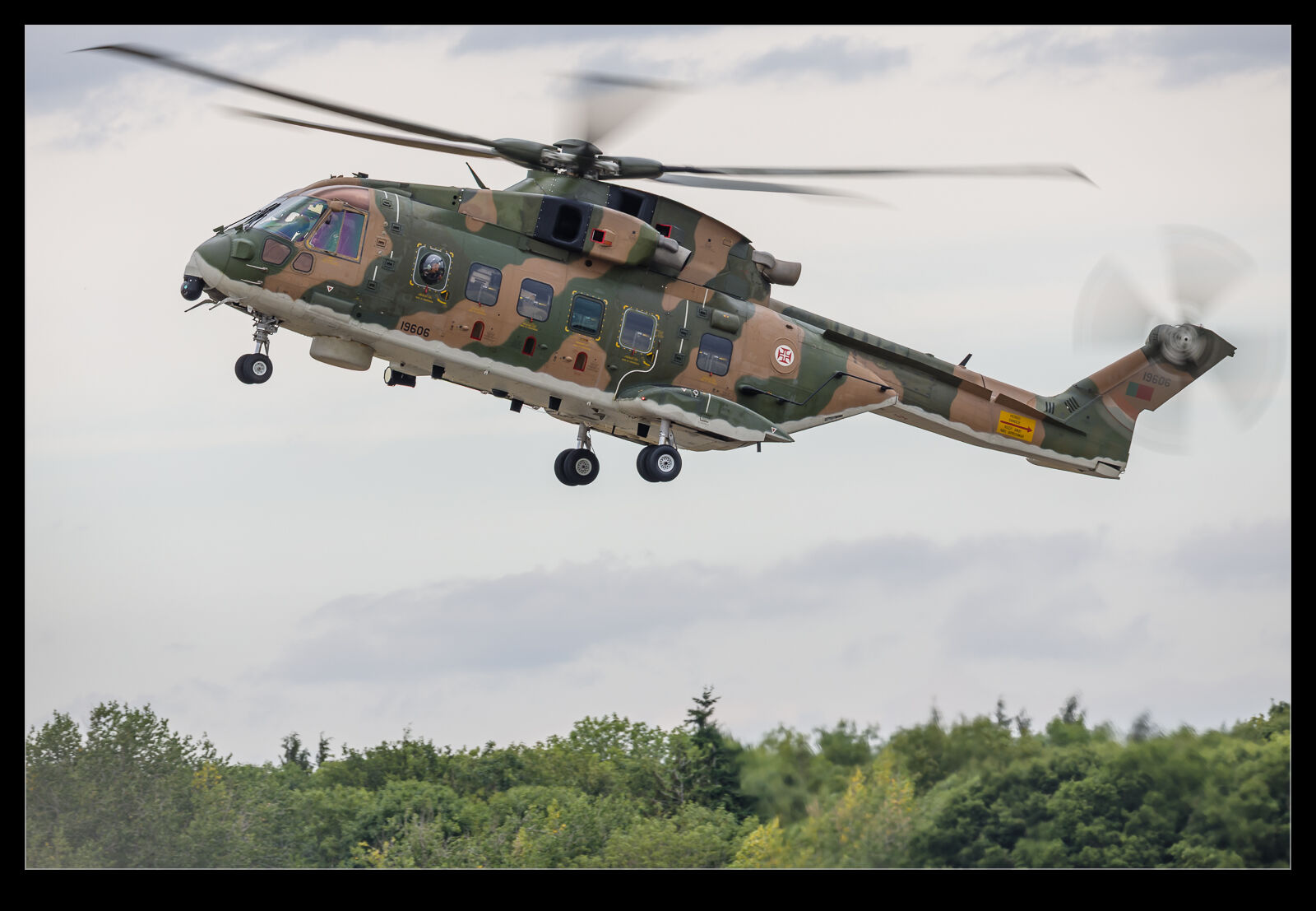 An air show is an opportunity to see an airframe performing in ways that you wouldn’t normally get but it is also a rather sterile environment. These helicopters are used for search and rescue along the coastline of Portugal, and I imagine it would be really nice to get to photograph them in their “natural habitat” with cliffs and the see behind them. Maybe I might find myself out there one day.
An air show is an opportunity to see an airframe performing in ways that you wouldn’t normally get but it is also a rather sterile environment. These helicopters are used for search and rescue along the coastline of Portugal, and I imagine it would be really nice to get to photograph them in their “natural habitat” with cliffs and the see behind them. Maybe I might find myself out there one day.
Taking a Chance With the T-38 Landing
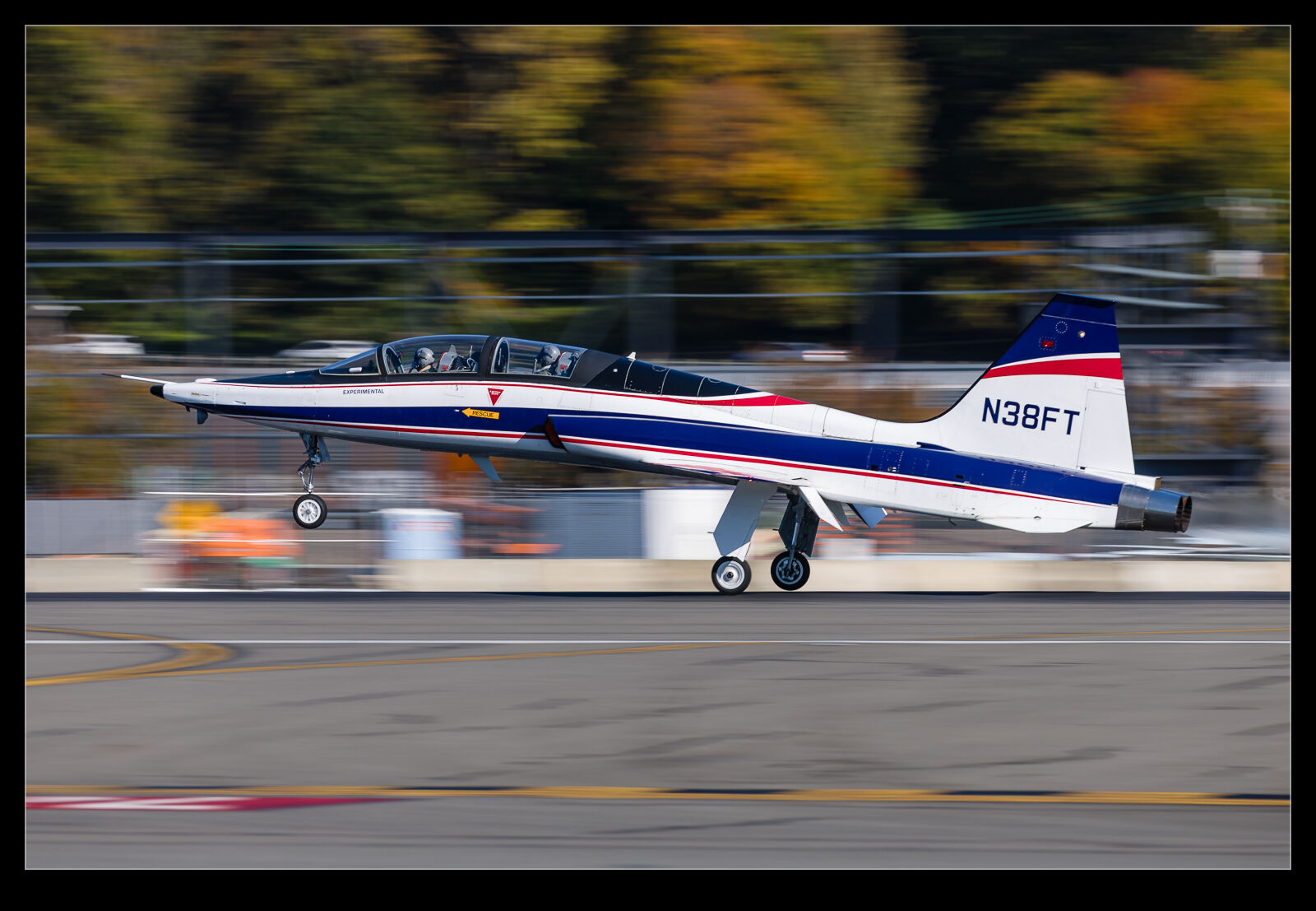 The T-38 chase planes that Boeing operates from Boeing Field did not fly as often as I would have liked. I’m sure they got plenty of use out of them, but it seemed to be a lucky break if one was up – particularly if I was in any place to see them. Consequently, I was always wondering whether I should make sure to get a sharp shot or take a chance on getting a more interesting look to the image. On this occasion, I decided to go with the latter. I dropped the shutter speed down to 1/100th of a second and hoped. A few came out okay. The cluttered background at Boeing Field is always a problem so a bit of blur helps put the focus on the plane.
The T-38 chase planes that Boeing operates from Boeing Field did not fly as often as I would have liked. I’m sure they got plenty of use out of them, but it seemed to be a lucky break if one was up – particularly if I was in any place to see them. Consequently, I was always wondering whether I should make sure to get a sharp shot or take a chance on getting a more interesting look to the image. On this occasion, I decided to go with the latter. I dropped the shutter speed down to 1/100th of a second and hoped. A few came out okay. The cluttered background at Boeing Field is always a problem so a bit of blur helps put the focus on the plane.
Super Bugs at Bremerton
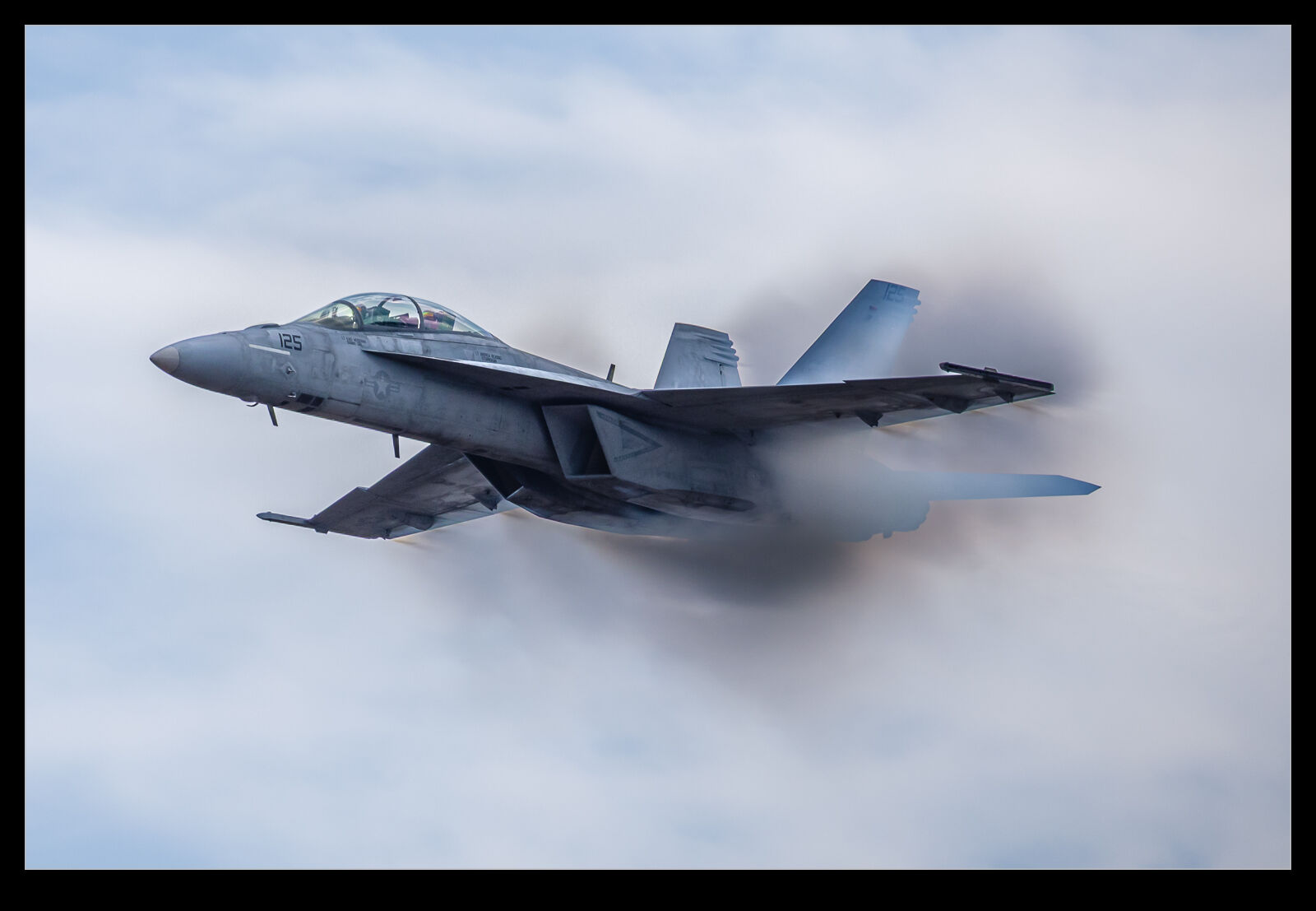 One of the last air shows I attended before we left the Pacific Northwest was at Bremerton. The unusual thing about this air show was that I didn’t head there alone. Instead, Nancy came along with me. It is a long time since she last came to a show with me, but the good news was that she enjoyed it! One of the parts of the show that she found the best was the US Navy’s Super Hornet display. They ripped up the sky for a while. Their blast across the field from crowd rear particularly amused her!
One of the last air shows I attended before we left the Pacific Northwest was at Bremerton. The unusual thing about this air show was that I didn’t head there alone. Instead, Nancy came along with me. It is a long time since she last came to a show with me, but the good news was that she enjoyed it! One of the parts of the show that she found the best was the US Navy’s Super Hornet display. They ripped up the sky for a while. Their blast across the field from crowd rear particularly amused her!
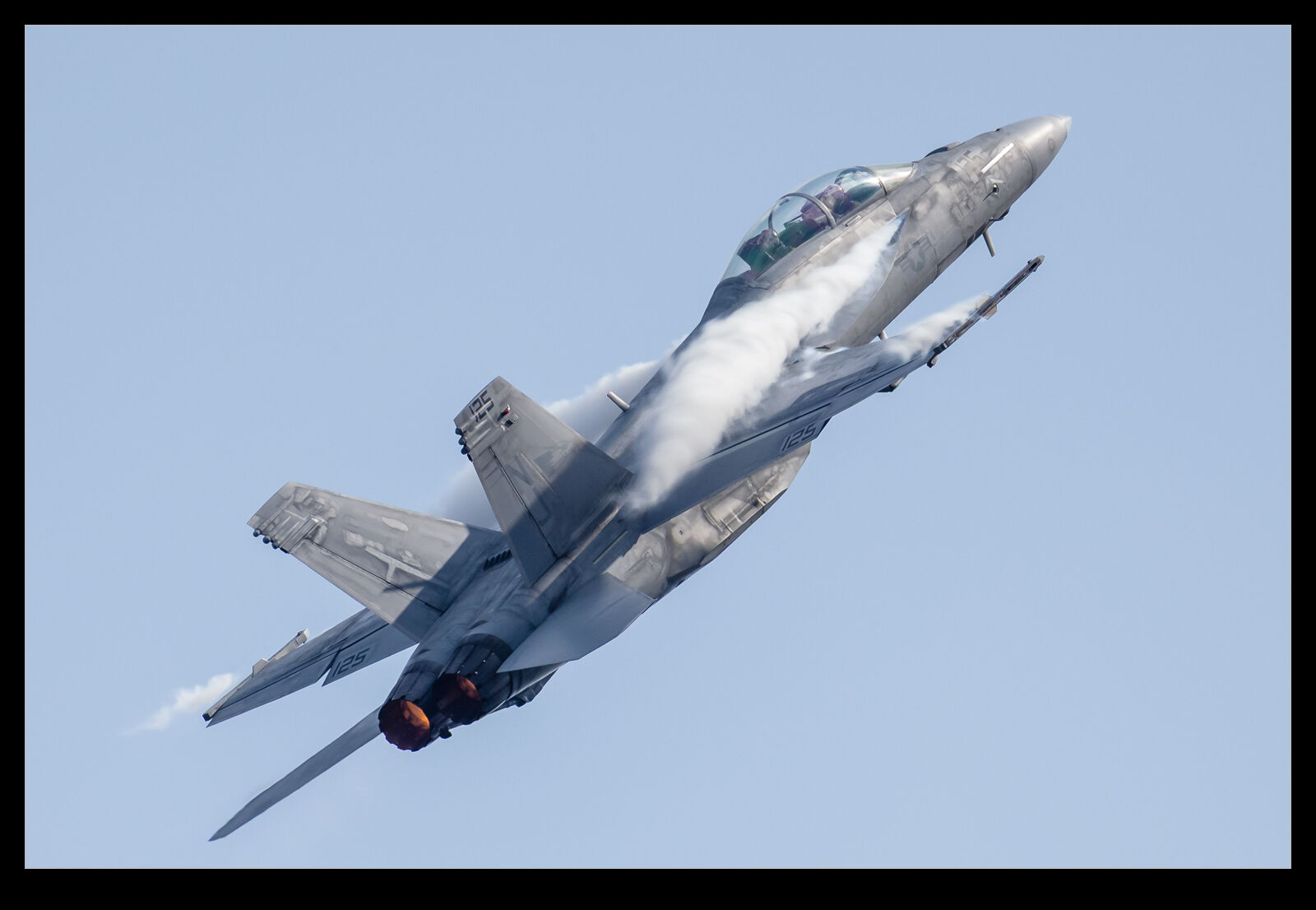 The conditions not ideal from a lighting point of view but there was humidity in the air with the upside that the jet was created plenty of spluff. One of the passes in particular created a lot of cloud activity. It made for a difficult image to process given the contrast with the cloudy background and that its own clouds needed not to be over exposed. I suspect I shall probably try reprocessing this again in the future as either my techniques improve, or the software gets more advanced. I did have a bit too much lens for the closest part of the pass – oh well…
The conditions not ideal from a lighting point of view but there was humidity in the air with the upside that the jet was created plenty of spluff. One of the passes in particular created a lot of cloud activity. It made for a difficult image to process given the contrast with the cloudy background and that its own clouds needed not to be over exposed. I suspect I shall probably try reprocessing this again in the future as either my techniques improve, or the software gets more advanced. I did have a bit too much lens for the closest part of the pass – oh well…
Apparently, This Helicopter is Very Rare
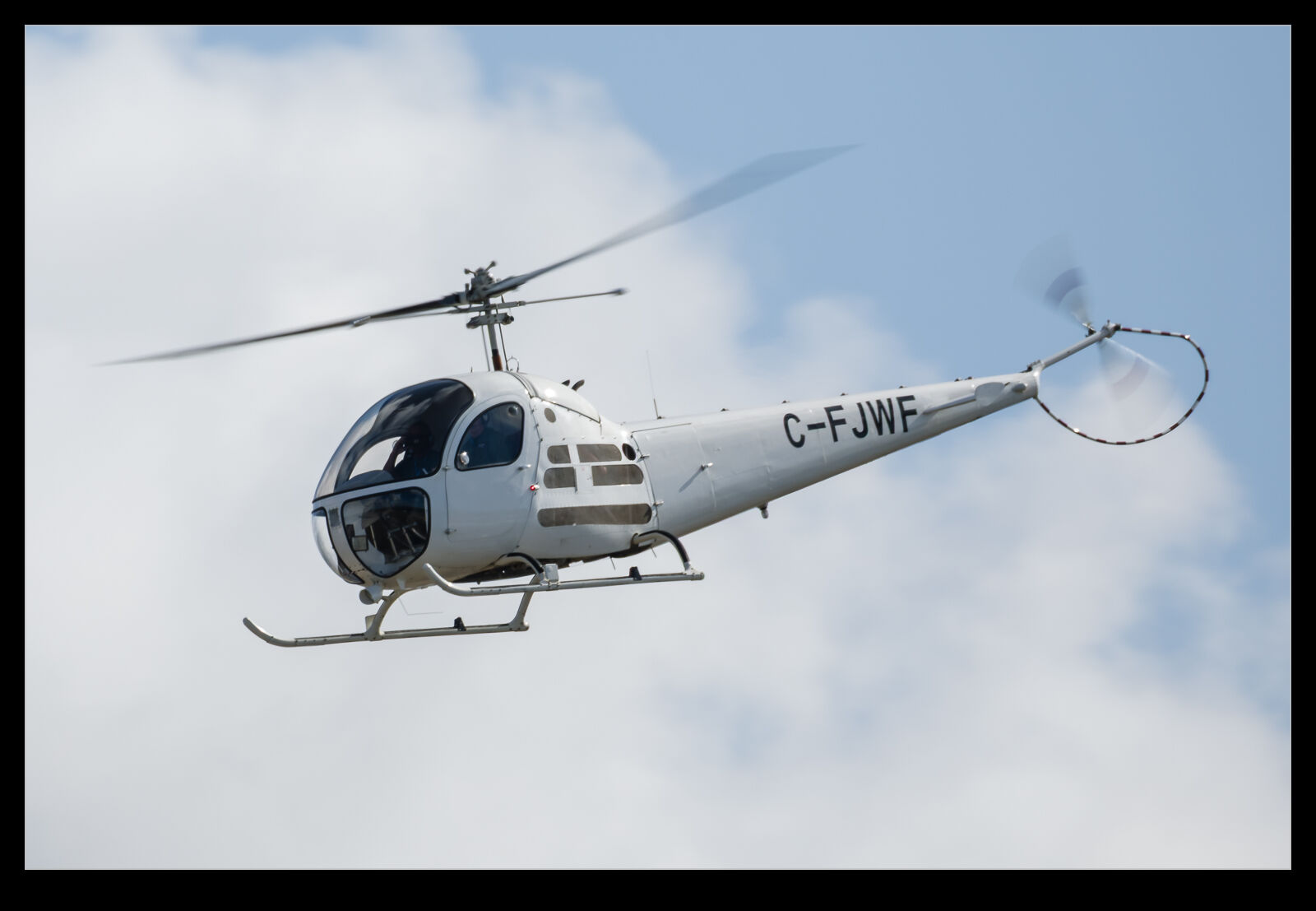 While the majority of aircraft that appear at RIAT are military, you do get some civilian types that show up as well. This year, one of these was a Canadian registered Bell 47. This airframe is a Bell 47H-1 which I am informed is a pretty rare member of the larger family. No idea whether this is true or whether these things are common as muck. I certainly haven’t got a pile of shots of similar airframes but that is hardly proof. Given that it is registered in Canada, I am not sure how much time it is spending in the UK, but it was here and flying so that’ll do!
While the majority of aircraft that appear at RIAT are military, you do get some civilian types that show up as well. This year, one of these was a Canadian registered Bell 47. This airframe is a Bell 47H-1 which I am informed is a pretty rare member of the larger family. No idea whether this is true or whether these things are common as muck. I certainly haven’t got a pile of shots of similar airframes but that is hardly proof. Given that it is registered in Canada, I am not sure how much time it is spending in the UK, but it was here and flying so that’ll do!

